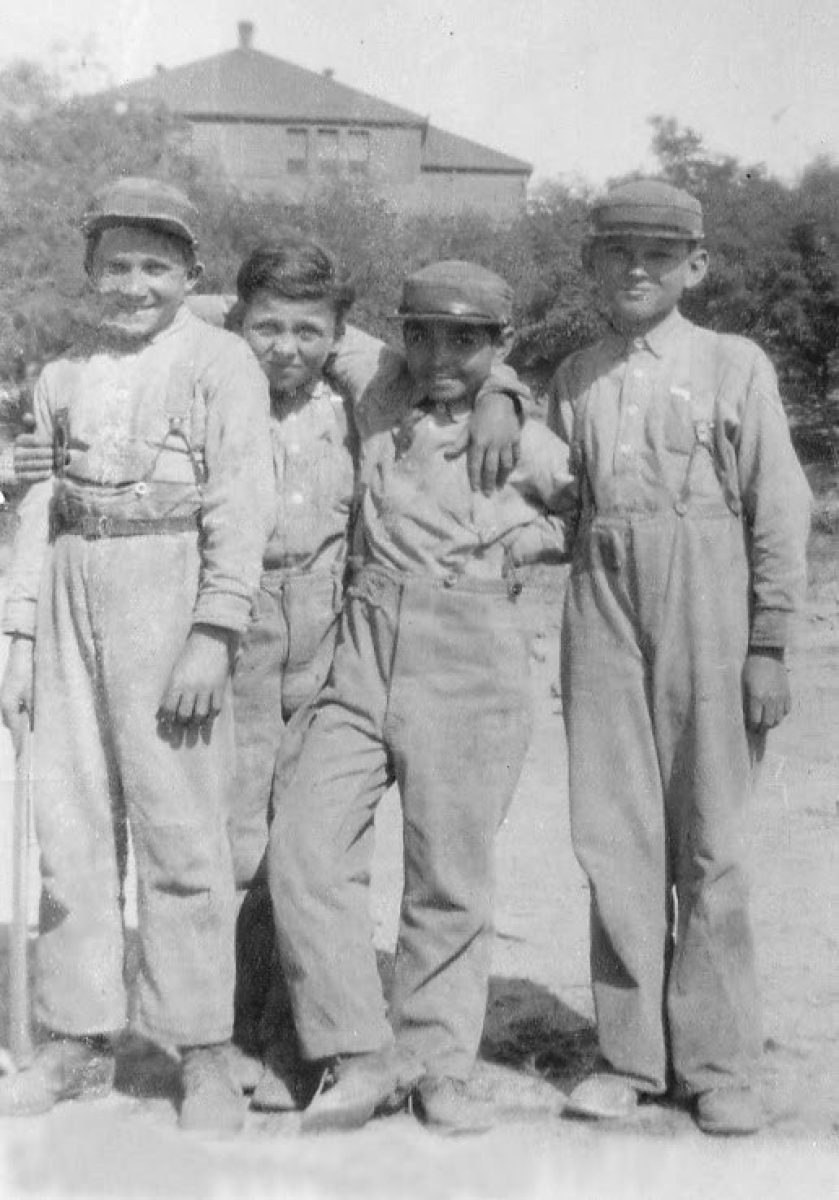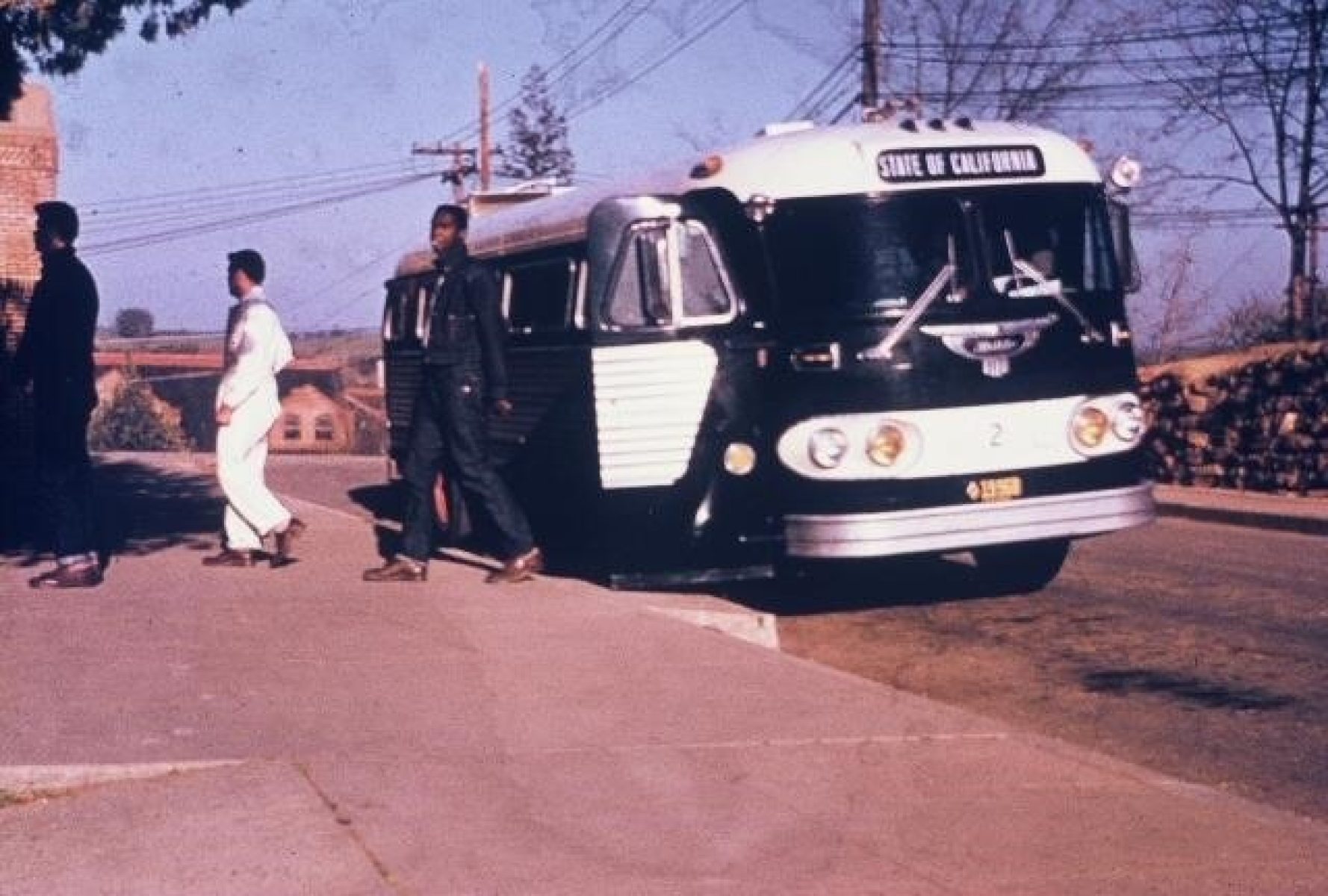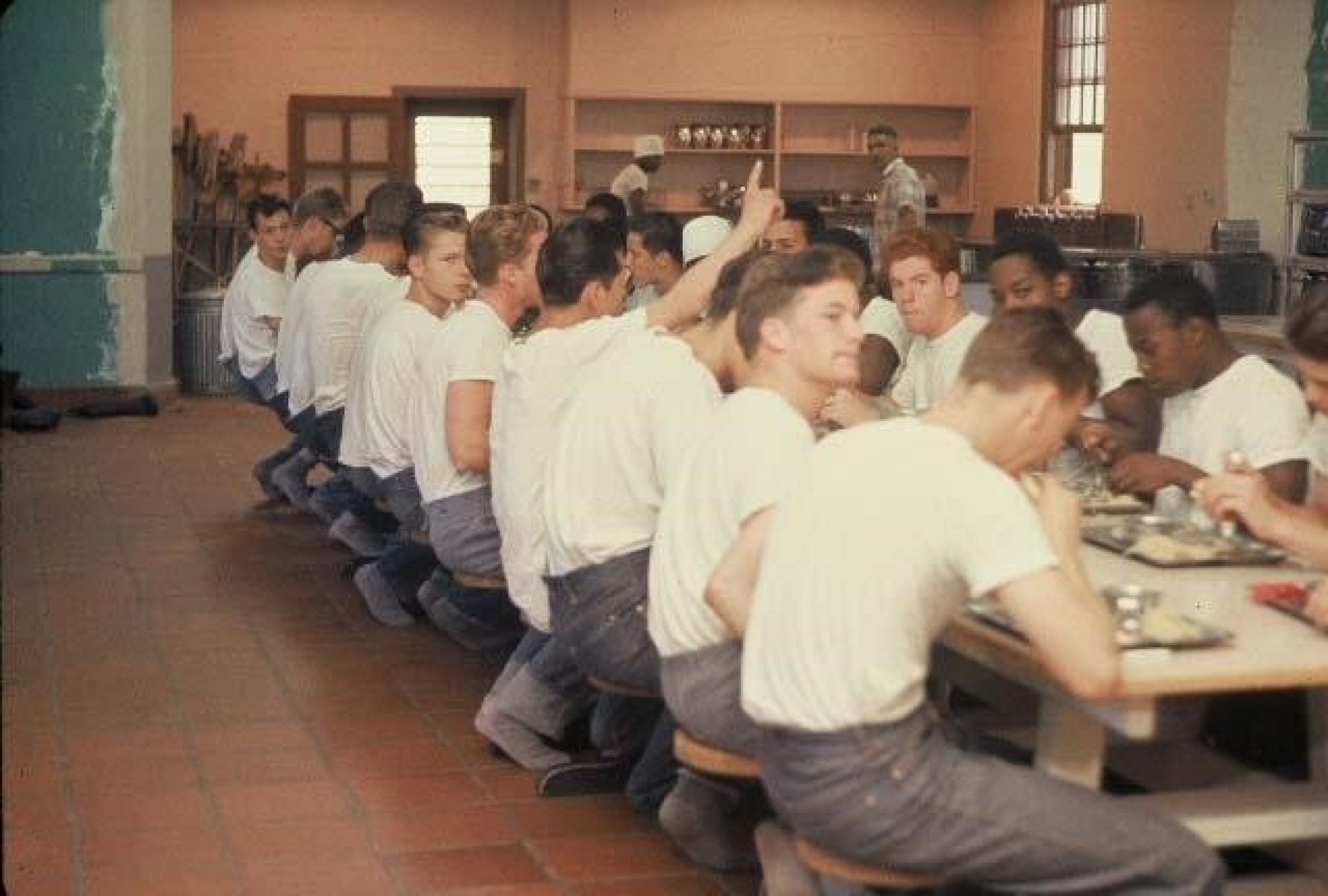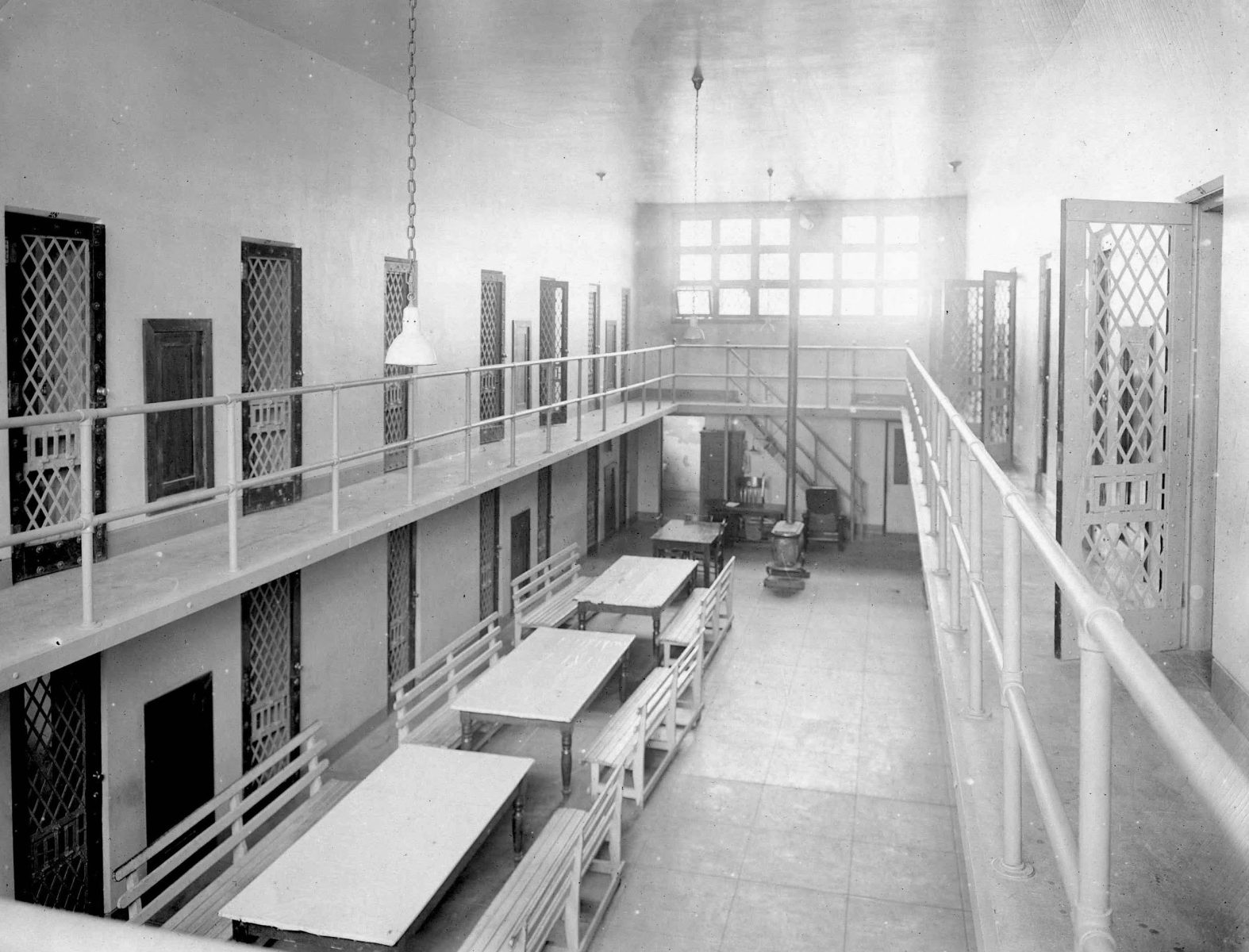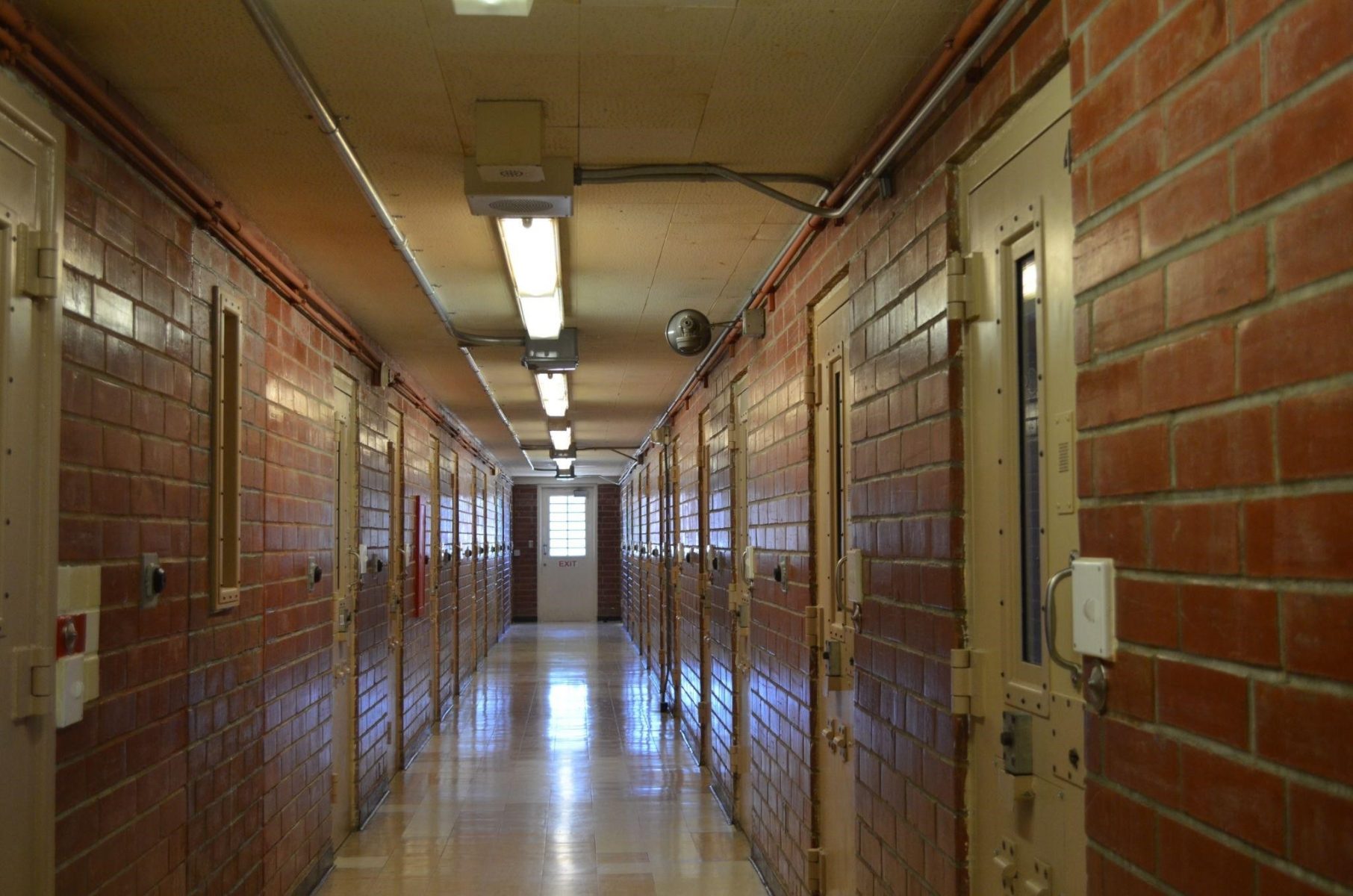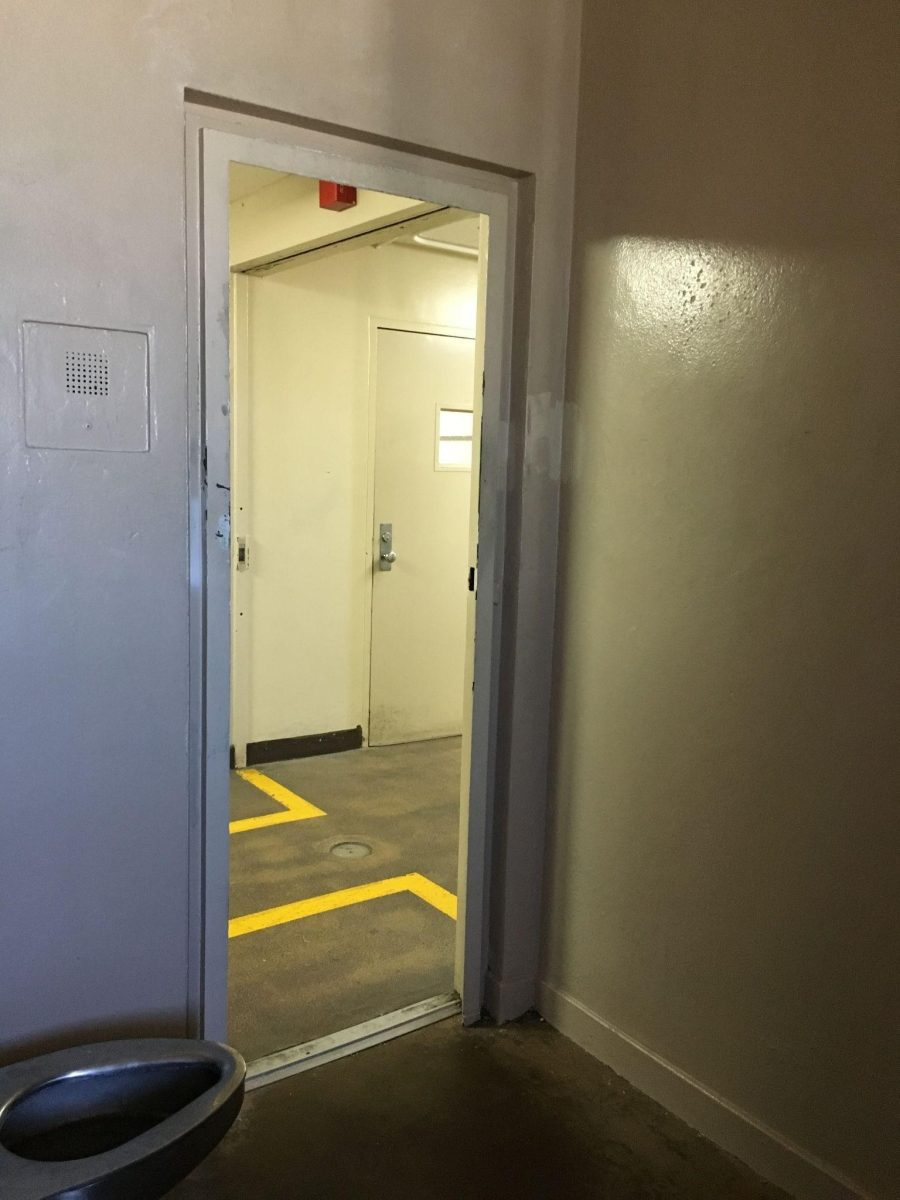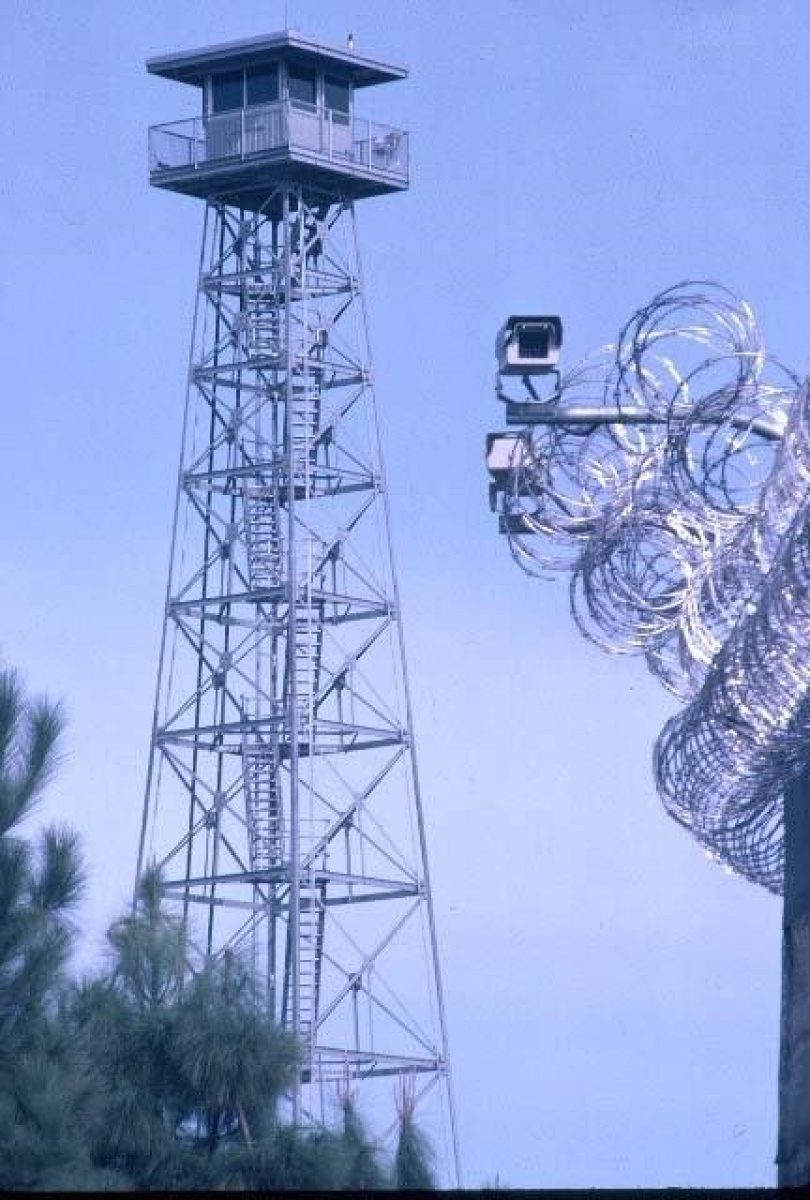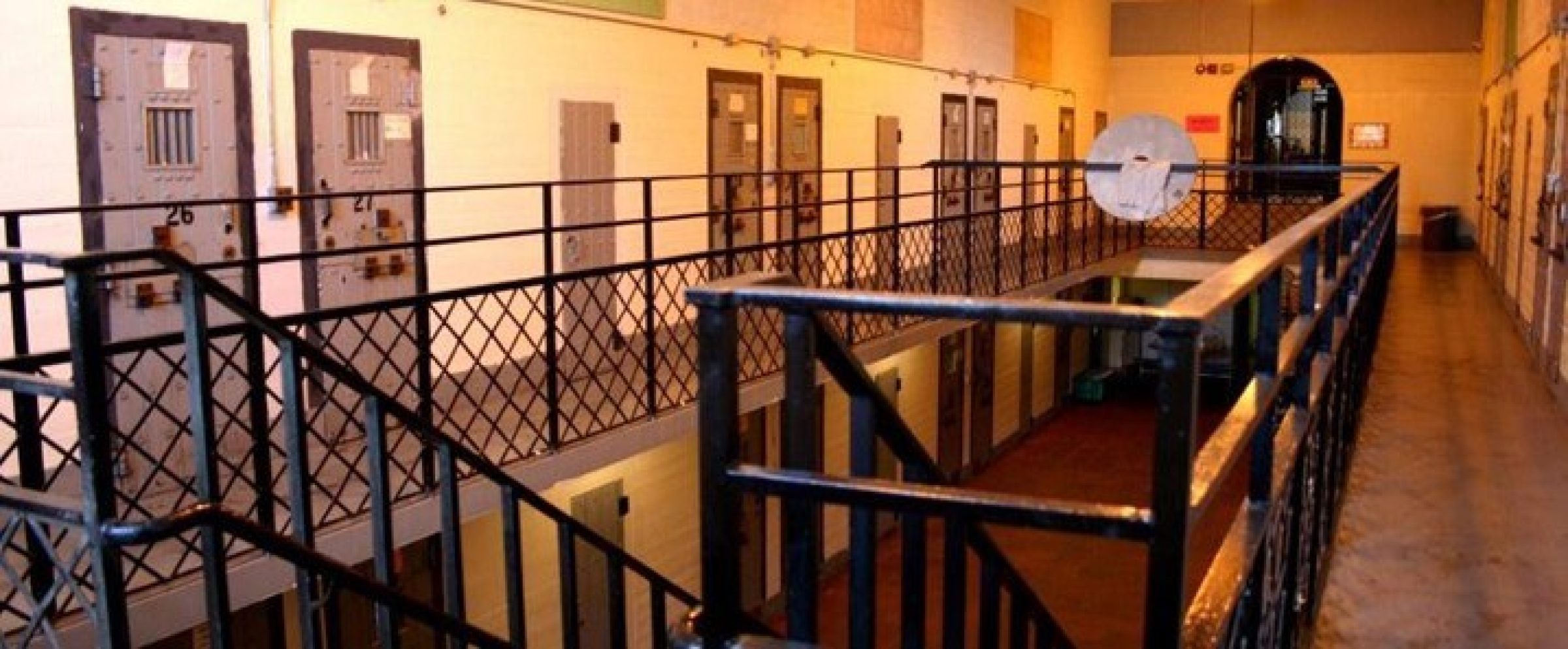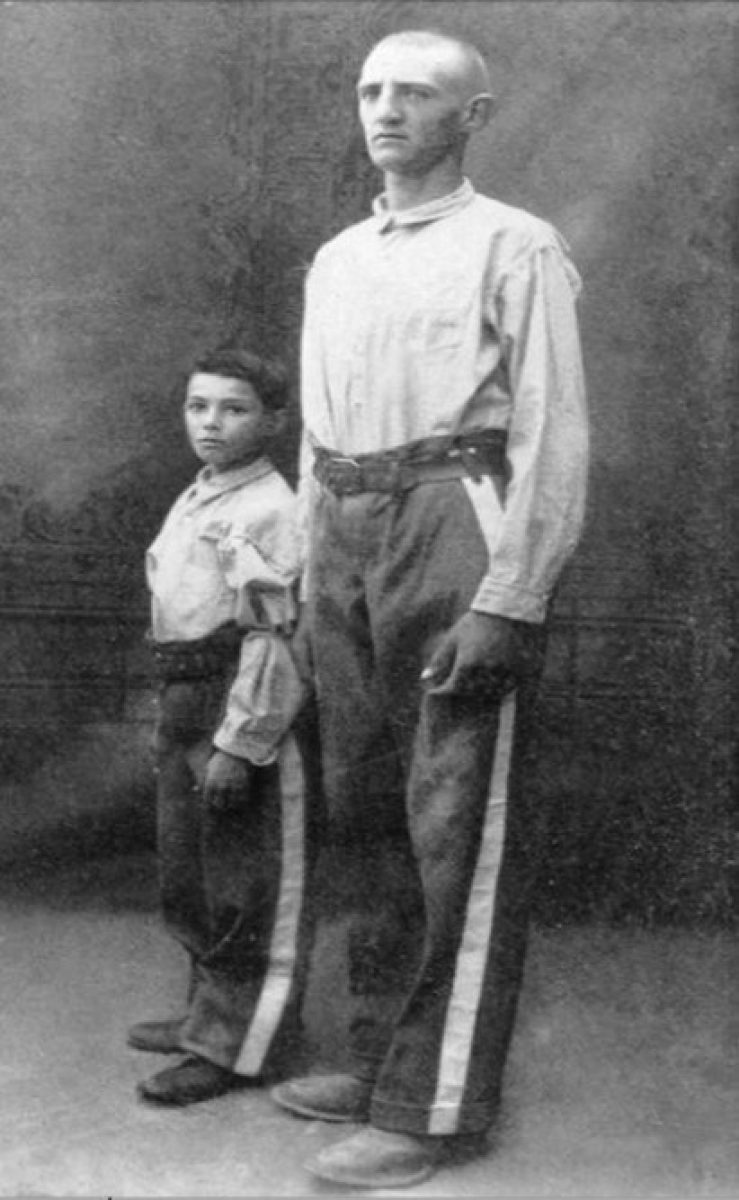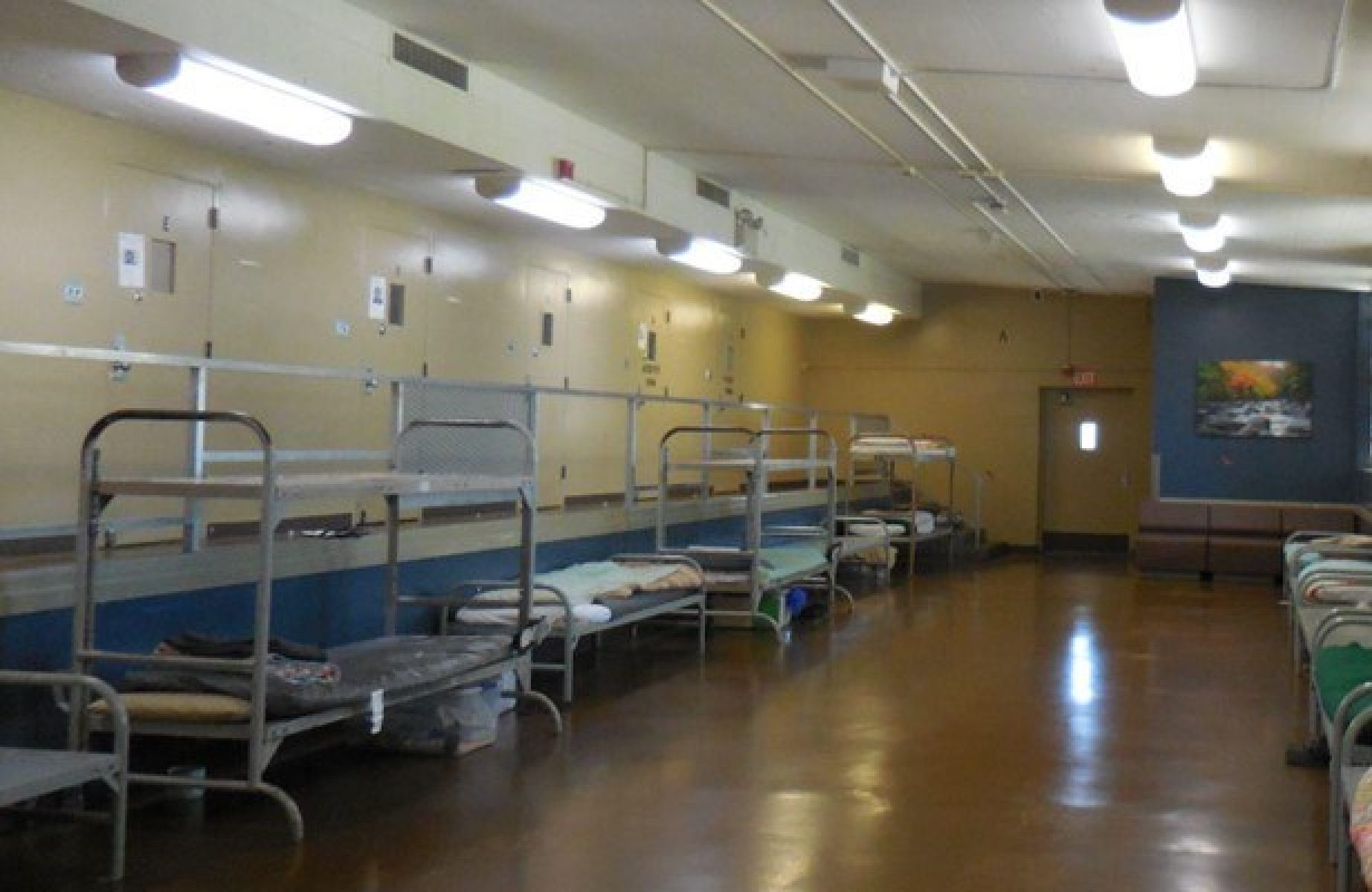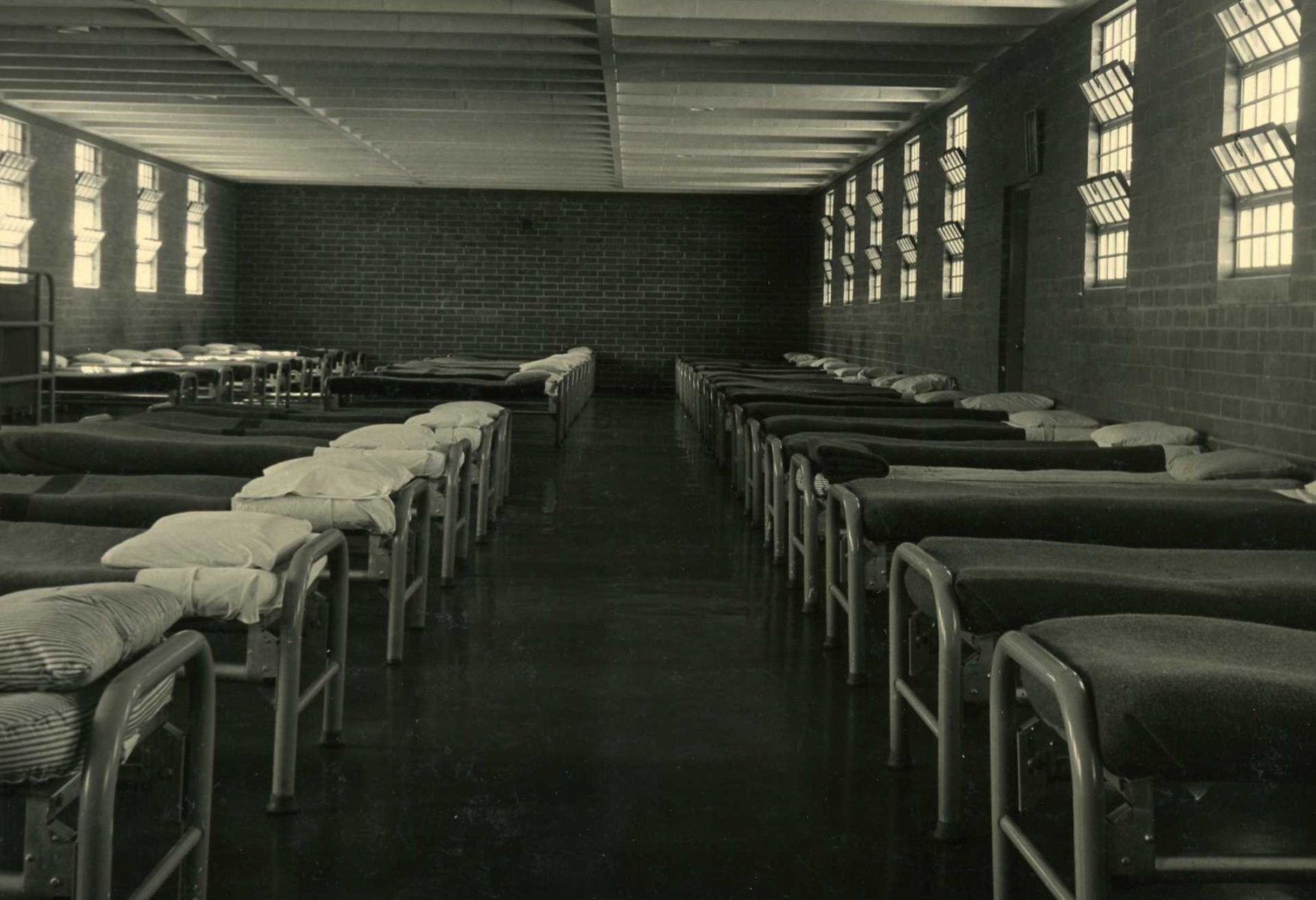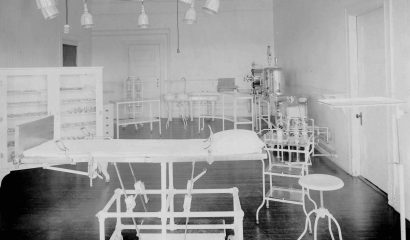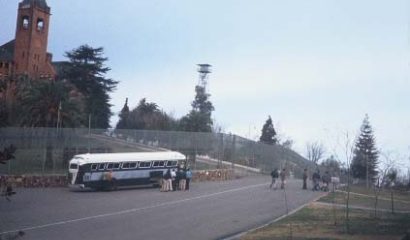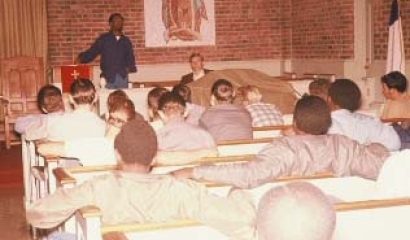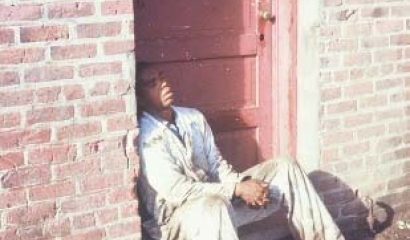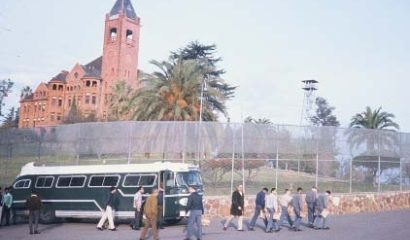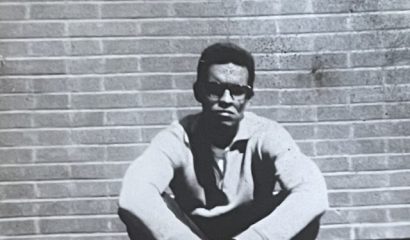Contact: For more information about this topic or to schedule an interview, please contact CJCJ Communications at (415) 621‑5661 x. 103 or cjcjmedia@cjcj.org.
SAN FRANCISCO – June 28, 2023 – A report released today by the Center on Juvenile and Criminal Justice (CJCJ) offers an in-depth look at the history of the Division of Juvenile Justice (DJJ) on the eve of its closure. June 30, 2023 marks the end of a brutal era in California history. Now, the state must reckon with its shameful past and safeguard future generations of youth.
“I lost God while I was at the YA. I thought, ‘If there were a God, He would never let this place exist.”
Acknowledgements
Thank you to the many young people and family members who shared their experiences with us and our partners. We created this report in collaboration with the California Alliance for Youth and Community Justice (CAYCJ), a collective of dozens of youth justice organizations from across the state. Special thanks to CAYCJ Director Abraham Medina and Deputy Director Israel Villa for their unfaltering commitment to keeping youth safe. Thank you also to the foundations whose generous grants made this report possible, including The California Endowment, The California Wellness Foundation, and Sierra Health Foundation. As California closes this chapter, we are honored to stand with these champions of justice. While one legacy of DJJ is its harm, another is the power and resiliency of those who passed through its gates. Their vision shows us the path forward.
Guide to Frequently Used Terms
Adjudication: The juvenile court equivalent of finding a person innocent or guilty. For example, when a youth is “adjudicated delinquent,” they are found to have committed an offense.
Disposition: The juvenile court equivalent of a sentence. A youth’s disposition can include probation supervision in the community or commitment to a secure facility.
DJJ: The California Division of Juvenile Justice, previously known as the California Youth Authority (CYA), is a division of the California Department of Corrections and Rehabilitation, where the most serious youth offenders are confined.
Credible Messengers: An approach to providing programming to youth and adults in the justice system that relies on people who were formerly justice-involved to deliver key information, share wisdom, or lead groups.
Confined youth: Refers to youth who are serving time in juvenile halls, ranches or camps, or who were sent to the Division of Juvenile Justice by the juvenile court.
CYA: The California Youth Authority, previous name for the Division of Juvenile Justice (DJJ).
Justice-involved youth: Refers to youth who have been involved with the juvenile justice system.
Net-widening: “Instead of reducing the number of youth formally processed through the juvenile justice system, these prevention and early intervention policies actually subject more youths to formal justice system intervention. Criminologists refer to this phenomenon as ‘net widening’ and it is a growing trend” (CJCJ, 2001).
Youth in detention/detained youth: Refers to youth detained in juvenile hall prior to sentencing.
“Violence is structurally endemic to large congregate institutions.”
Introduction
California’s state-run youth correctional system, the Division of Juvenile Justice (DJJ), is set to close at the end of June 2023, bringing an end to the state’s 132-year history of systemic abuse. To mark this historic moment, our report details DJJ’s shameful past and examines its lessons for the future.
The centerpiece of this report are the stories of those who were once confined in California’s youth correctional facilities. Although their time at DJJ (formerly the California Youth Authority, or CYA) spans decades, their recollections are disturbingly similar. Our interviewees recount widespread abuse within a culture that normalized violence and left them with lasting trauma.
Despite numerous feeble attempts over the decades to reform this abusive system, life inside of the facilities remained unchanged. It is a system that, for more than a century, has operated on deception — offering the promise of rehabilitation while functioning as little more than a prison.
In tracing the history of DJJ and California’s path forward, we aim to:
1) Pay tribute to the thousands of people confined in these state-run institutions who suffered throughout history, 2) Highlight the lessons of DJJ’s closure for other states and jurisdictions, and 3) Ensure that California counties not replicate past failures.
From these goals, we outline three key recommendations:
1. Pay reparations: Pay people who were left traumatized by their years at DJJ and have had to carry these burdens into adulthood.
2. Close youth prisons: Close all prison-like youth institutions nationwide to protect youth from the devastating effects of institutionalization.
3. Protect youth: Apply the lessons of DJJ to the rampant mistreatment of youth in California’s county-run youth facilities, where DJJ’s closure is boosting youth populations and expanding the influence of harmful probation systems.
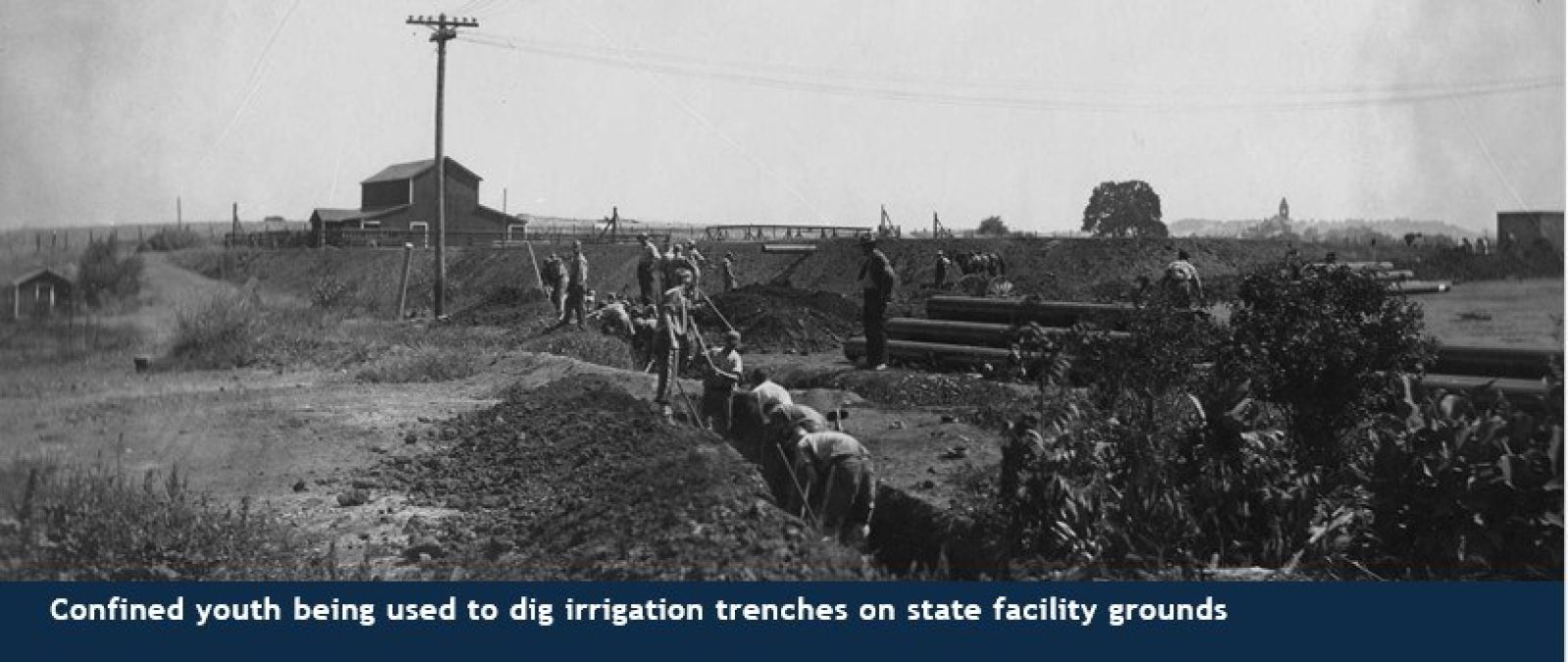
DJJ’s closure is the result of decades of persistent campaign work, public exposure, and policy advocacy that forced the state to confront its contradiction. In 2020, Governor Gavin Newsom took the unprecedented step of declaring DJJ broken beyond repair and recommending its closure. This historic moment, while decades too late, was embraced by many state lawmakers who were weary of the stories of abuse1 and the ongoing expense of a failing enterprise.
Youth, families, community members, and advocates collaborated for years to lay the groundwork for closure. They pulled back the curtain and exposed what the system had long endeavored to hide. Since its founding in 1985, the Center on Juvenile and Criminal Justice (CJCJ) has been a key voice highlighting conditions in the state-run youth correctional facilities and calling for their permanent closure (CJCJ, 2023). Over the years, CJCJ staff have authored publications, given expert testimony, informed the media, conducted policy forums, developed model alternative programs, and supported community organizing. Anchored in the understanding that large correctional bureaucracies cannot change and are inherently flawed, CJCJ has vigorously advocated for a full shutdown of the state system for nearly 40 years. Now, with DJJ finally set to close, California must reckon with its painful history and build a future focused on providing care and healing outside of locked facilities.
“Violence is heavy in there and it keeps the whole place bound.”
Historical Overview
The reform school era ushers in abuse and violence that will define the system for 132 years
• 1890: The California State Legislature establishes the state’s first correctional institutions for youth. They are referred to as “reform schools.”
• 1891: The first such reform school, the Whittier State Reformatory for Boys and Girls, opens.
• 1914: The state inflicts forced sterilization on poor, primarily non-white youth.
Decades of repeated reorganization fail to change the system’s culture
• 1939: The suspicious suicide of a 13-year-old boy amid widespread abuse and mistreatment prompts a state investigation.
• 1942: The state reorganizes its youth facilities by moving them from the Division of Institutions into a new entity, the California Youth Authority (CYA).
• 1961: The state reorganizes its youth facilities again. CYA is placed under a new agency: The Youth and Adult Corrections Agency.
• 1969: The state reorganizes its youth facilities for a third time, placing CYA and the department overseeing adult prisons under the Human Relations Agency (later the Health and Welfare Agency).
• 1980: The state reorganizes its facilities once again by placing CYA within the Youth and Adult Correctional Agency.
• 1982 – 1988: The Commonweal Research Institute releases a series of reports condemning CYA’s abusive practices.
The “superpredator” myth spreads and more youth are placed in overcrowded facilities
• 1996: CYA’s population reaches its peak at more than 10,000 youth.
• 1999: Staff are found to be punishing youth by denying them food and handcuffing them around the clock. Scandal erupts when the public learns of staff organizing fights between youth in what was referred to as “Friday Night Fights.”
• 2000: A female youth sues alleging she was repeatedly molested by staff. An inspector finds that staff keep some youth in their cells for 23 hours a day.
• 2003: A youth commits suicide, the 13th since 1996.
Deplorable conditions prompt 12 years of court monitoring
• 2003: The Prison Law Office sues CYA over poor conditions and rampant violence.
• 2004: CYA is placed under a consent decree, bringing routine monitoring and court oversight.
• 2004: CJCJ staff testify on the harms of CYA in the State Legislature.
• 2005: CJCJ hosts the Restructuring Youth Corrections in California conference and submits a blueprint to the California State Legislature on creating a more humane juvenile justice system.
• 2005: The state reorganizes again, dissolving the CYA and placing its facilities within DJJ, a division of the California Department of Corrections and Rehabilitation, which administers adult prisons.
• 2007: A new law (SB 81) requires that counties commit most youth to county facilities rather than DJJ.
• 2007 & 2012: CJCJ Executive Director Daniel Macallair, testifies in the Capitol and argues for DJJ’s closure.
• 2008: The Little Hoover Commission calls for DJJ’s closure. CJCJ staff provide testimony and serve on the Little Hoover Commission’s Advisory Committee on Juvenile Justice.
• 2003 – 2011: 2003 – 2011: California closes 7 facilities due to falling youth populations and persistent advocacy.
• 2012: Governor Jerry Brown nearly closes DJJ, but retreats amid pressure from interest groups.
• 2012: The Legislative Analyst’s Office releases a report recommending that state leaders close DJJ and realign juvenile justice to the counties.
• 2015: CJCJ Executive Director Daniel Macallair publishes After the Doors Were Locked: A History of Youth Corrections in California and the Origins of Twenty-First Century Reform chronicling DJJ’s repeated failures over more than a century.
Continued failures culminate in an end to the state’s correctional system
• 2016: DJJ is released from the Farrell lawsuit, ending routine monitoring of the facilities. 2019: CJCJ releases a scathing account of life inside DJJ facilities since the end of the Farrell lawsuit, detailing staff abuse and a culture of violence.
• 2020: Governor Gavin Newsom, recognizing its long history of failure and harm, proposes closing DJJ. SB 823 (2020) and SB 92 (2021) outline the shift to an entirely county-based system.
• 2023: DJJ will close on June 30, 2023.
Sources: Ajmani & Webster, 2016; CDCR, 2023; CJCJ, 2002; 2005; 2007; 2016; 2019; Macallair, 2015.
Looking Back on More Than a Century of Harm
In 2016, the most sweeping lawsuit in California history against the state’s youth corrections system came to an unceremonious end (Farrell Lawsuit, 2003). For more than a decade, DJJ had struggled to comply with court-imposed mandates to address decrepit conditions and rampant violence inside its youth facilities; mandates put into place in 2004, when Governor Arnold Schwarzenegger entered into a consent decree.
“Reformers come and reformers go. State institutions carry on. Nothing in their history suggests they can sustain reform, no matter what money, what staff, and programs are pumped into them. The same crises that have plagued them for 150 years intrude today. Though the cast may change, the players go on producing failure.”
Doing so was an acknowledgement of what independent observers had declared for more than 100 years — the state’s youth correctional institutions were human warehouses where youth were immersed in an environment of violence and brutality.
Yet the consent decree, and court oversight it ushered in, would not be enough to keep youth safe. By 2016, young people continued to face dangerous and traumatic conditions in the state system (CJCJ, 2019). Governor Schwarzenegger, like the 20 governors before him, failed to act on the overwhelming evidence of a broken system. Ultimately, the Farrell lawsuit, one in a long line of attempts to improve the youth correctional system, further revealed the system was impervious to reform.
The grave of Samuel Goins, a Black youth who was shot while trying to escape from the Preston School of Industry in 1919
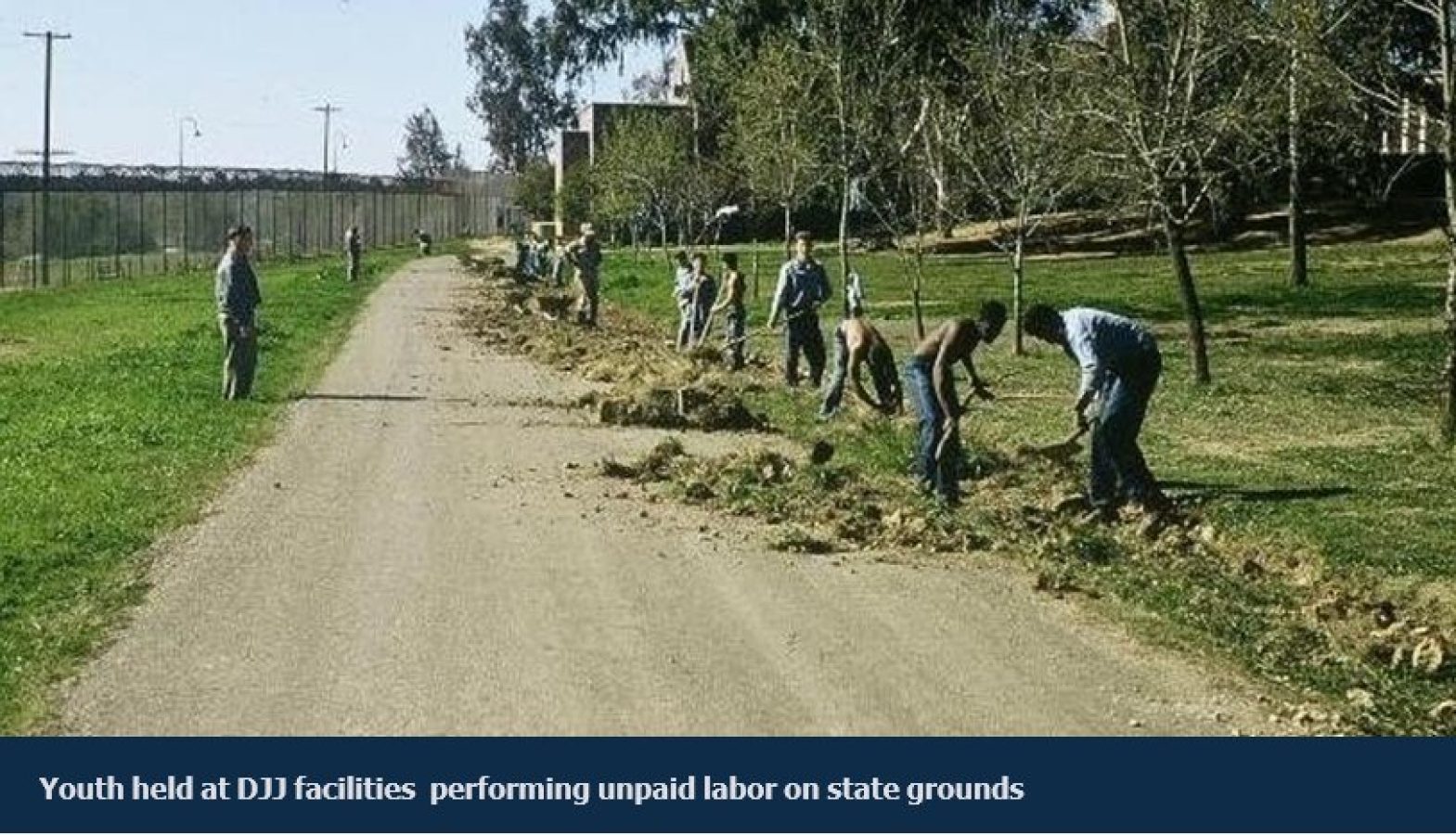
a) California’s 100+ year failed experiment with youth corrections
California first established youth correctional facilities in the 19th century based on an adult penitentiary model. For over 130 years, California youth have been confined in prison-like facilities characterized by strict routines and harsh rule enforcement. Youth in the facilities are expected to conform to the institutional regime or face extreme punishment from custodial staff, whose primary role is maintaining control. Institutional defenders argue that the strict regimentation forces conformity and inculcates youth with respect for authority. After a period of confinement in these brutal facilities, however, youth are returned to their communities angry and traumatized by their treatment at the hands of the state with little to no reentry support (Macallair, 2015).
“I still have these traumas of inside. It’s only been a year and I still think about it, you know like. Even when I walk in the street, you know, I’m constantly looking around, you know, everywhere I go, you know, and I’m told you know ‘just relax, you know, it’s all going to be alright with time’. But it’s just how I think, you know, and I’m still adapting, you know.
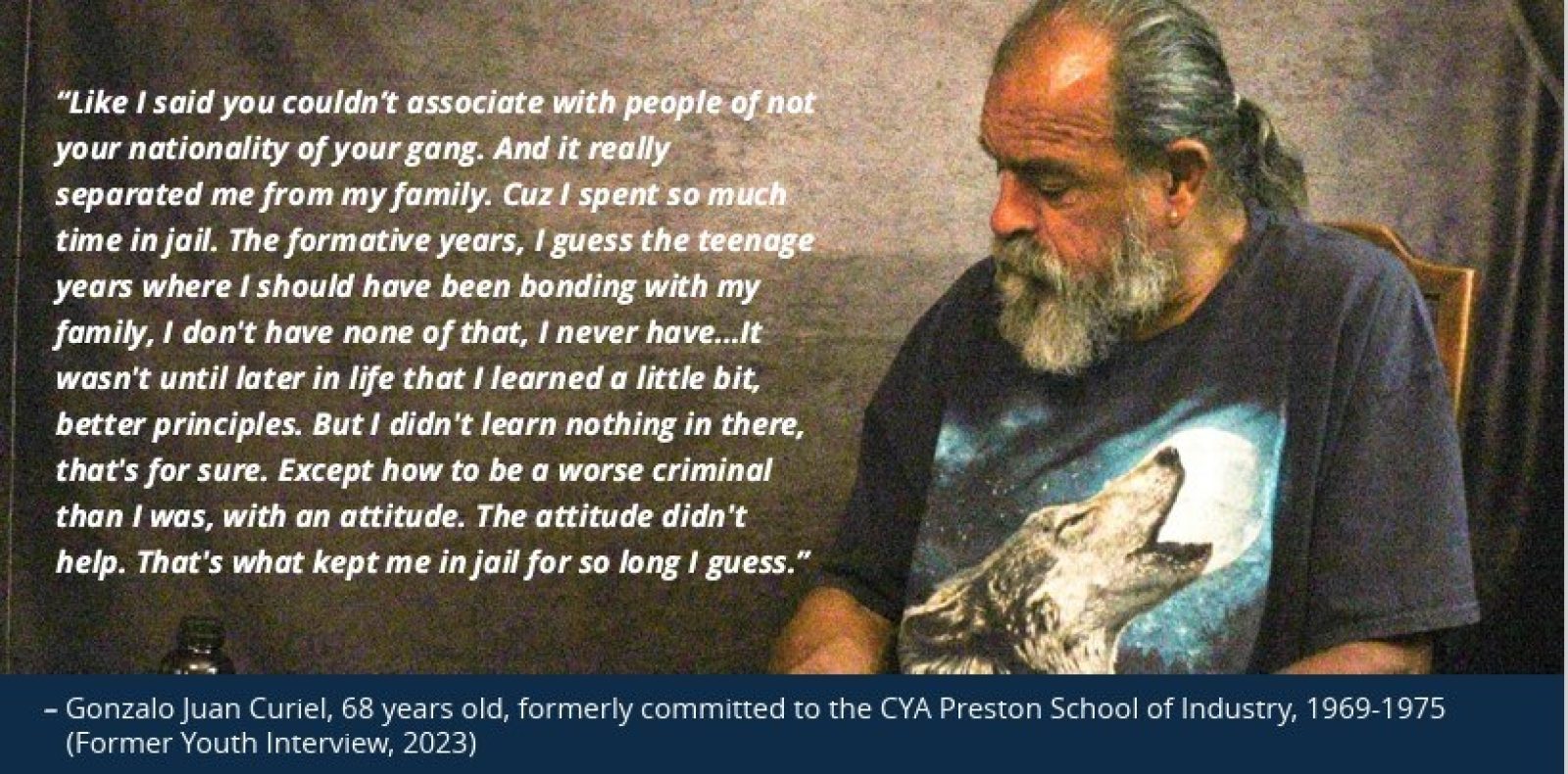
The inhumane nature of California youth correctional facilities is well documented and incontrovertible. 2From their beginnings in the 1890s, confinement in these institutions evoked the worst behaviors among young people and their adult captors. Staff treat youth as prisoners, while youth view staff as hostile guards. Youth from across the state are taken from their families and communities and then hoarded together. Facility staff inform arriving youth about the importance of following rules and not fighting. Staff then place youth in large living units where gang conflict is pervasive and fighting is unavoidable. Survival depends on fighting readiness. Youth have no chance to comply with the institutional rules in such an environment. They quickly resent their confinement and the false promise of rehabilitation.
In recent decades, youth have sought safety and solidarity with the institutional gangs that thrive system-wide. While gangs were prevalent since the 1920s, the most active gangs started in the 1960s. These gangs divide youth by race, ethnicity, and geography. Gang warfare is so pervasive that DJJ has assigned gang coordinators to each facility. When a youth first arrives, the gang coordinator immediately interviews them to speculate on their future gang affiliation. Staff assume that youth already connected to a gang in their community would similarly affiliate inside the institution. For those not previously affiliated, the gang coordinator assumes theywould join a gang based on their race or ethnicity and geography. Staff expect a Latino youth from Los Angeles or Southern California to affiliate with the Sureños gang and a Latino youth from Northern California to affiliate with the Norteños.
By making these assumptions, DJJ staff effectively force youth to affiliate with a gang. Once assigned to a living unit, youth are expected to demonstrate fighting ability whenever challenged. This earns them membership in an institutional gang. Youth who cannot physically defend themselves are vulnerable to ongoing assault and exploitation by tougher gang-affiliated youth. Unaffiliated youth sit at the bottom of the institutional hierarchy.
“On October 29, 2021, an officer allegedly opened a ward’s room door to allow two wards to enter and attack the first ward. The officer allegedly opened the first ward’s door a second time to allow the second and third ward into the room to assault the first ward again. The first ward suffered a broken tooth. After the incident, the officer allegedly told the first ward to clean up the blood in his room and discard his bloodied clothes.”
c) Staff abuses and disciplinary measures to assert control
Staff use various disciplinary measures to control life inside these institutions. They include routine pepper spraying of youth and isolating them for long periods in barren concrete cells. Staff frequently Staff frequently enlist other young people to assault their peers (CJCJ, 2019). Staff target youth they do not like. Youth also share that staff beat youth in isolated areas of the facility (CJCJ, 2019). This staff behavior only deepens youths’ inherent resistance to confinement and the resentment it fosters.
In 2004, the Berkeley-based Prison Law Office filed a lawsuit against the California Youth Authority. This was the last attempt to fix a system that was beyond repair. The Farrell lawsuit was a milestone in California juvenile justice history. The lawsuit provided a stunning public revelation of the scandalous conditions that officials often hid, including physical and sexual abuse and multiple youth suicides.
However, the lawsuit’s imposed solutions proved unworkable and did little to remedy decades of entrenched institutional culture and practice. Staff proved impervious to change despite a declining youth population and injections of millions of dollars in state funding.
The notorius Tamarack Lodge at the Preston School of Industry where youth were held insolitary confinement.
“I didn’t have a voice in there so, being out, I often still feel like that. That place made me feel like I didn’t have a voice so when I got out, people would have to tell me, ‘You can speak up and you can say something. You can complain about it.’ I was so used to me complaining and nothing happening. I was so used to speaking to say something and it just going unnoticed or brushed off at [DJJ].”
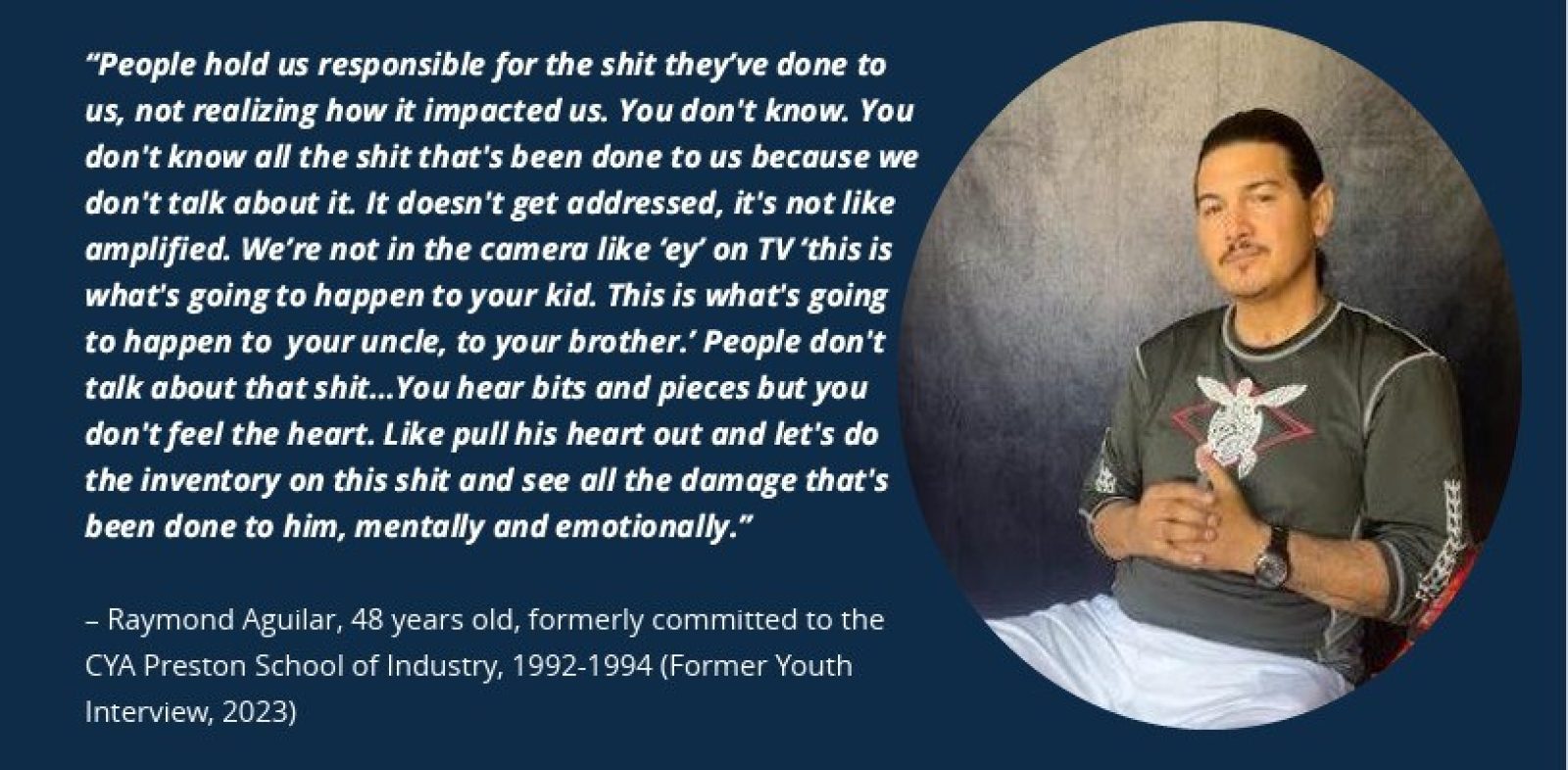
The Farrell lawsuit and the Schwarzenegger reforms:
• Governor restructures California’s corrections system’s administration.
• California Youth Authority is eliminated as an independent agency.
• Youth corrections institutions merged with the adult corrections system as Division of Juvenile Facilities.
• Senate Bill 81 (2007) prohibits counties from committing youth to the state institutions for low-level offenses.
d) The continuous cycle of scandal and reform: “But this time will be different”
The history of California youth corrections reform follows a common pattern that begins with revelations of abusive behavior and mismanagement. The revelations result in public outcry forcing elected officials to respond. Unfortunately, this response fails to address the systemic institutional issues. With the Farrell lawsuit, Schwarzenegger’s administration acknowledged these long-standing problems and entered into a consent decree with the plaintiffs. When reform efforts stalled, a frustrated Schwarzenegger administration signed Senate Bill 81 (SB 81, 2007). SB 81 represented a significant departure from conventional methods of corrections reform because it sought to divert youth from institutions rather than trying to reform the institutions themselves.
The unique strategy known as juvenile justice realignment consisted of the following:
• Youth with non-violent offenses were to stay in county programs and facilities and could not be committed to state correctional institutions.
• State paid counties for new youth dispositional and aftercare programs.
• DJJ continued to accept youth with serious and violent offenses.
The impact of SB 81 was immediate. The DJJ population fell by nearly half — from more than 3,000 in 2005 to roughly 1,600 in 2009 (CDCR, 2019). This proved to be the most effective reform as it allowed hundreds of youth every year to be housed closer to home.
The passage of SB 81 coincided with reports by CJCJ, the Little Hoover Commission, and the Legislative Analyst’s Office calling for DJJ’s closure. Many viewed DJJ as obsolete, citing the declining population, the expense of maintaining decaying facilities, and the number of vacant beds in secure facilities at the county level. As the youth population declined, DJJ accelerated the closing of additional facilities. By 2011, only three large facilities out of the original 11 remained operative.
The success of SB 81 and the growing calls for DJJ closure did not immediately end the system. When Governor Brown was elected in 2011, his administration entertained such a move, but soon retreated under pressure from the probation chiefs and juvenile court judges. Instead, the Brown administration took a cautious approach as DJJ’s population continued declining. When the Farrell lawsuit concluded in 2016, the state funded a study on the creation of new youth facilities, which would have deepened California’s reliance on the state system (CJCJ, 2016). However, the Legislature would not commit the necessary funding, so this new youth system, termed the California Leadership Academy, did not come to fruition.
e) The road to closure: A recognition that DJJ is beyond repair
Upon entering office in 2019, Governor Gavin Newsom faced a familiar problem. Only three years after the conclusion of the Farrell lawsuit, little had changed at DJJ. The promises and expectations of the lawsuit were nothing more than illusory. Confronted with the harsh reality of a broken youth corrections system, Governor Newsom initially adopted a conventional approach. In February 2019, he proposed transferring facility administration responsibilities from the California Department of Corrections and Rehabilitation (CDCR) to a newly created Department of Youth and Community Restoration within the Health and Human Services Agency. The strategy presupposed that a new administrative entity focused on rehabilitation would transform DJJ’s prison culture.
“When I came out, I was different. I couldn’t have conversations with people, with with my family. I felt cut off because they isolate you.”
Governor Newsom’s initial plan to reform the state youth corrections system (January 2019):
• Declares that the system is not providing rehabilitation and needs reform.
• Plans to move DJJ’s main institutions into the Health and Human Services Agency.
• Plan premised on belief that new administrative structure will create rehabilitative institutions.
• New name will be the Department of Youth and Community Restoration.
• Plan is never brought to fruition. In a year later, Governor Newsom proposes closing DJJ.
Newsom changes course, calling for closure of state youth corrections system (May 14, 2020)
• Elimination of DJJ.
• Transfer of all juvenile justice functions to the counties.
• Pays counties hundreds of millions of dollars to serve youth locally.
Newsom’s initial plan was short-lived. In April 2019, the Legislative Analyst’s Office (LAO) concluded that Newsom’s strategy of transferring administrative responsibility to a different state agency was tried by previous governors at least five times over the past 70 years with the same failed results (see Historical Overview) (LAO, 2019). The LAO continued to argue for DJJ’s closure and the full realignment of juvenile corrections to the counties.
CJCJ’s February 2019 comprehensive analysis of DJJ conditions further eroded support for Newsom’s initial plan (CJCJ, 2019). The CJCJ report entitled, “Unmet Promises: Continued Violence and Neglect in California’s Division of the Juvenile Justice,” revealed alarming evidence of continued violence, abuse, and mismanagement within DJJ and dispelled any lingering notions that the system had transformed (CJCJ, 2019).
On May 14, 2020 Governor Newsom made the momentous decision to finally close DJJ and realign juvenile justice to California’s counties. The facilities were beyond repair. DJJ’s time was over. The legislature soon followed his lead and passed Senate Bill 823 (2020) and Senate Bill 92 (2021), which included the following provisions:
• Ends most youth commitments to DJJ on July 1, 2021 (SB 823).
• Allows county facilities to hold youth up to the age of 25 for specified offenses (SB 823).
• Creates a new state grant program — the Juvenile Justice Realignment Block Grant — that will allocate more than $200 million annually to counties (SB 823).
• Restricts the use of private and out-of-state placements (SB 823).
• Allows counties to develop a “secure track,” known as Secure Youth Treatment Facilities, for youth who would have been committed to DJJ (SB 92).
• Mandates that DJJ close permanently on July 1, 2023 (SB 92).
California’s closure of DJJ and full juvenile justice realignment to the counties is unprecedented. This is the most significant juvenile justice reform in California’s history. While it is a credit to the leadership of Governor Newsom and the California State Legislature, change of this magnitude could not have been accomplished without grassroot advocacy. It is the culmination of decades of tireless organizing by community advocates, youth, and their families.
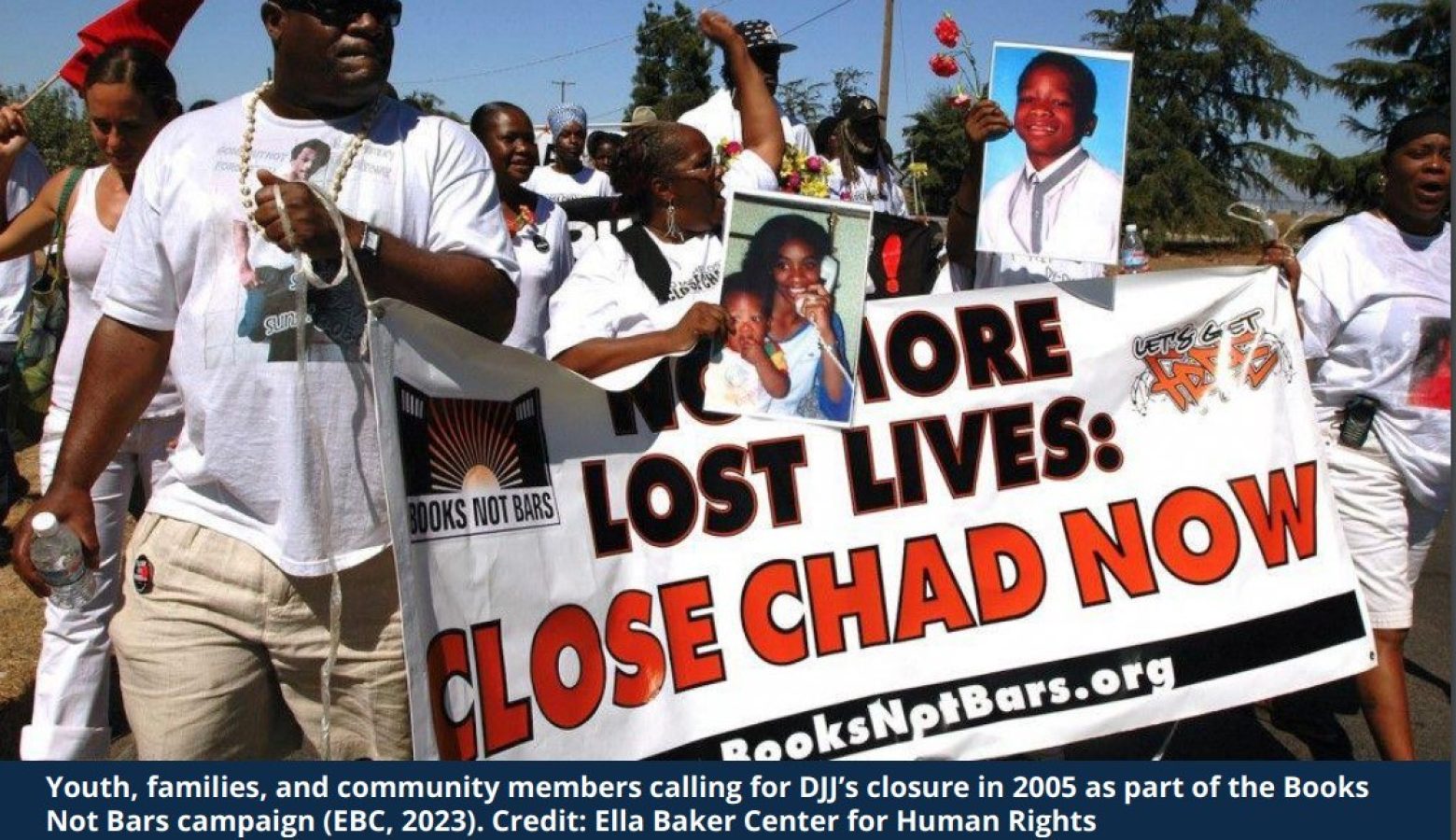
Looking to the Future
With DJJ’s closure, California’s 58 counties will now oversee all youth who come into contact with the justice system, from those confined for serious offenses to those receiving services in the community. In many counties, this continuum has major gaps. For example, most counties have failed to invest in the community-based services that prevent youth from
entering the justice system. Many also lack viable alternatives to locked facilities or offer little rehabilitative programming to the youth confined there long-term.
Nearly every California county has a juvenile hall. Historically, counties have placed youth in juvenile halls for short periods of time, either while they waited for their cases to be processed or while awaiting transfer to a long-term facility. In addition to a juvenile hall, many counties also housed youth in smaller secure facilities known as camps and ranches. These were built to confine youth for longer periods of time and often had a programming component. However, recently, several counties have closed their camps and ranches in favor of keeping youth with non-DJJ commitments in the juvenile hall. These cost- saving measures are the result of dramatic declines in the number of youth entering the justice system — a stark nationwide trend that has left juvenile facilities nearly empty and probation departments scrambling to justify their multi-million dollar budgets. 3
Confining youth long-term in a juvenile hall has always been problematic. Juvenile halls were designed as temporary way stations, not the site of extended care. Most do not have sufficient outdoor recreation or indoor programming space, and their large youth populations and austere living environments, which mirror DJJ’s, leave youth at risk of violence and trauma. From 2016 to 2022, the population of youth in California’s camps and ranches fell 67% from 1,571 to 526, while the juvenile hall population fell just 44% from 2,779 to 1,549 (BSCC, 2016; 2023). In that time, five counties fully emptied their camps, leaving just 22 counties, or one in three, with such facilities (BSCC, 2016; 2023).
“There should be signs in the facility when you come in that say, ‘You’re going to go home one day. We’re here to release you. We’re not here to keep you.’ Sta exercise their power like, ‘I can keep you here longer. You better respect me,. You better listen to me.’ They should be preparing us for when we get released.”
a. The alternatives to DJJ — SYTFs — are located in dangerous and unsuitable juvenile halls
DJJ’s closure is occurring while county probation departments consolidate youth within juvenile halls. To ease the transition away from a system of state-run institutions, the law now requires counties to develop Secure Youth Treatment Facilities (SYTFs). These “facilities” are meant to serve youth who, in past years, would have been sent to DJJ. One goal of SYTFs is to assure juvenile court judges that youth facing serious charges will
receive intensive treatment and rehabilitation within a secure setting, preventing their transfer to adult court. However, several major issues with SYTFs threaten to undermine this goal and the overall success of juvenile realignment.
For one, most SYTFs are currently in juvenile halls, rather than in camps, ranches, or other secure settings. This means that juvenile halls may now house youth for years at a time without sufficient programming and in bleak, prison-like environments. In Los Angeles County, for example, youth endure violence, staff abuse, and isolation within one of the county’s immense juvenile facilities, all while receiving few supportive services to help them address their needs. Youth in Los Angeles’s SYTF, located in the notorious Barry J. Nidorf Juvenile Hall, face living conditions that rival many of DJJ’s. In fact, in 2021, Los Angeles’s Barry J. Nidorf and Central Juvenile Halls were first found to be unsuitable for safe living by the Board of State and Community Corrections (BSCC) (BSCC, 2021).
Typically a passive state agency, the BSCC oversees juvenile facilities and rarely enforces its own standards. Even under BSCC’s lax oversight, LA’s Nidorf and Central juvenile halls were ordered closed by the BSCC in May 2023. 4
Like Los Angeles, counties across California are experiencing critical safety issues amid the transition to SYTFs. Based on conversations with community leaders from 17 counties, each with with direct knowledge of life in their local juvenile halls, confined youth are experiencing many of the same dangerous conditions:
- 1. There is rampant drug use in juvenile facilities, including fentanyl use, with youth in some juvenile halls experiencing life-threatening drug overdoses. Despite a concerning spike in overdoses, juvenile halls offer few substance use treatment programs and many lack procedures for supporting youth after an overdose.
- The probation staff who run county juvenile halls are resigning in high numbers or not showing up to work. While departments receive hundreds of millions of dollars from the state and are funded to employ thousands, far fewer are on hand to staff juvenile halls and maintain safety. These shortages contribute to violence and other critical health and safety issues. They also result in canceled programs and less time for youth to be outdoors or out of their cells.
- Juvenile hall staff are over reliant on the use of isolation. Many facilities lock youth in their cells for extended periods and restrict their time outdoors, which has devastating effects on their mental health.
- Youth are receiving little or no programming in SYTFs. Programs are often canceled, usually due to a lack of staffing. Those that are offered fail to meet youths’ basic needs. In many counties, probation departments are also making it difficult for community groups to provide programming for youth in juvenile halls, even in the midst of severe staff shortages.
Finally, there is a concern over the rise in counties’ SYTF populations. Because SYTFs were meant to replace DJJ, their youth populations should be roughly equivalent to the number of youth previously sent to the state system. Unfortunately, many counties are reporting rapid growth in their SYTFs, with some SYTFs already surpassing previous DJJ populations. This means that some youth are facing years locked up in an SYTF when they would have received a lesser disposition (or sentence) before DJJ’s closure. Reports of such SYTF “net widening” are coming from counties all across the state. For example, San Bernardino County’s previous DJJ population was 42 in December 2019 (before the closure announcement), but the most recent data (as of April 2023) show that 71 youth had already been committed to their SYTF (CJCJ, 2023a; SBPD, 2023). Likewise, in Ventura County, 14 youth were in the SYTF (as of April 2023) compared to just four held in DJJ in December 2019 (CJCJ, 2023a; VCPD, 2023).
b. Counties are already filling their SYTFs and offering few chances for release
This dependence on highly restrictive SYTFs suggests a new comfort among judges, probation officers, and district attorneys with placing youth in programs that are thought to be better and safer than DJJ, despite mounting evidence that they still expose young people to traumatic conditions. It may also fulfill a desire among judges to appear punitive in their handling of serious cases, despite the research showing that longer confinement periods produces higher rates of recidivism (Mulvey, 2011).
In addition to growing numbers of youth sent to SYTFs, there is also a failure among county justice system actors to allow youth to “step down” to less-restrictive placements. The law now entitles youth in SYTFs to a review before a juvenile court judge every six months. At this review, youth may receive time cuts as a result of good conduct and in recognition for their progress through SYTF programming. In some counties where these six- month reviews are already underway, they do not appear to be offering youth meaningful opportunities for shorter confinement times. If this pattern continues and youths’ hard work and good behavior are not rewarded at six-month reviews, they will be less motivated to participate in future rehabilitative programming.
As part of juvenile realignment, youth in SYTFs also qualify to step down from the secure facility into transitional programs that further their rehabilitation and prepare them for an eventual return home. However, the county leaders we spoke to describe a lack of less-restrictive options or alternatives to SYTF’s for youth, resulting in more young people being kept in traumatizing, high-security environments.
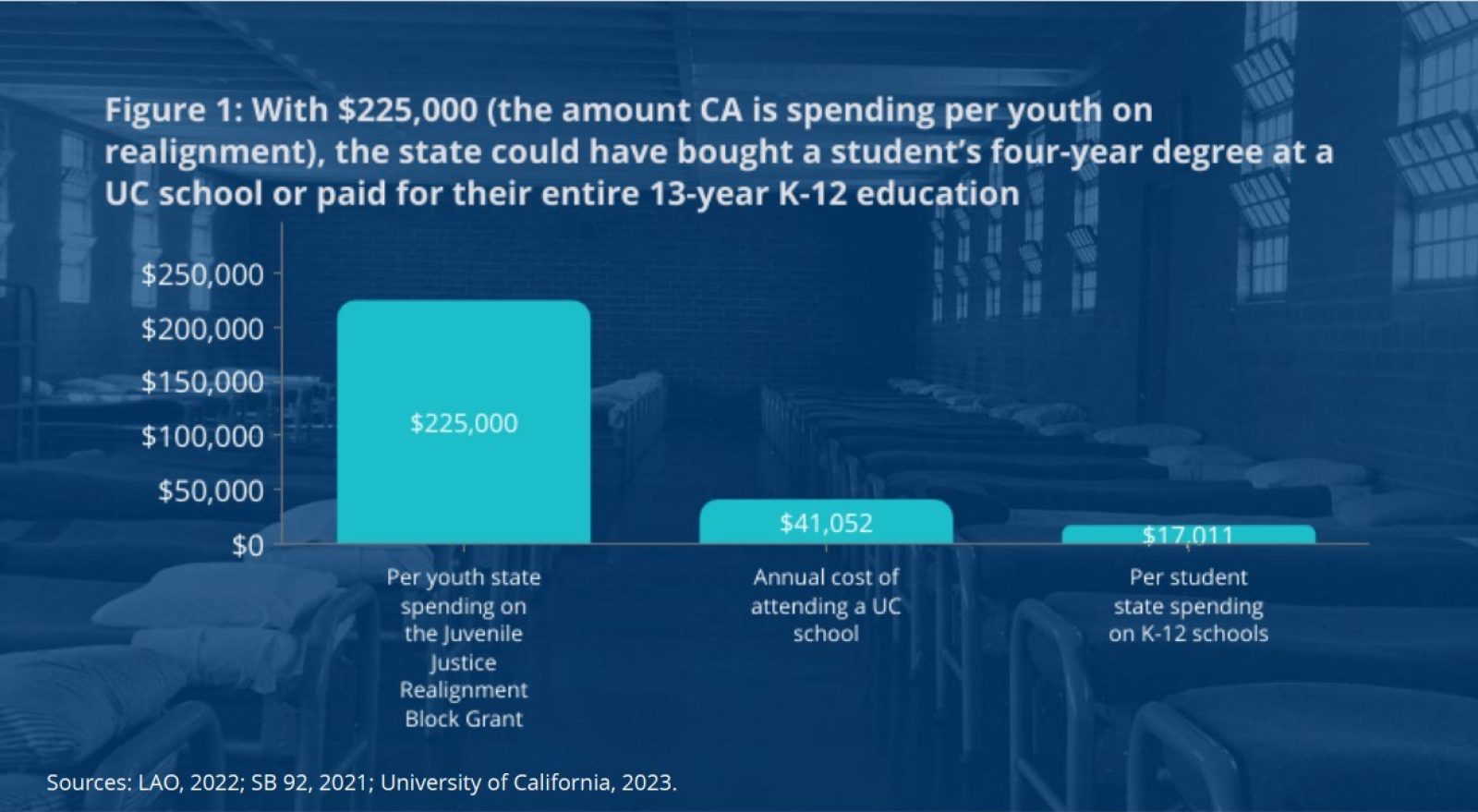
c. Probation has seized on juvenile realignment
DJJ’s closure and the resulting transition to full county control over justice-involved youth has been a boon for county probation departments. Although probation has long claimed that they are not equipped to serve youth with more complex needs and serious cases, they were ultimately willing to support the Governor’s realignment plans — at the right price. Now the state is paying counties approximately $225,000 for each youth served locally (SB 92, 2021).5This new funding joins hundreds of millions of dollars in existing state grant funding meant to serve justice-involved youth. Each year, probation departments receive the majority of funds through the Juvenile Justice Crime Prevention Act (money to which they have no statutory claim) and the Youthful Offender Block Grant (funding designed to compensate counties for housing youth in local facilities rather than DJJ). These funds have increased nearly every year despite steep declines in the population of youth referred to or detained by probation departments (Figure 2).6
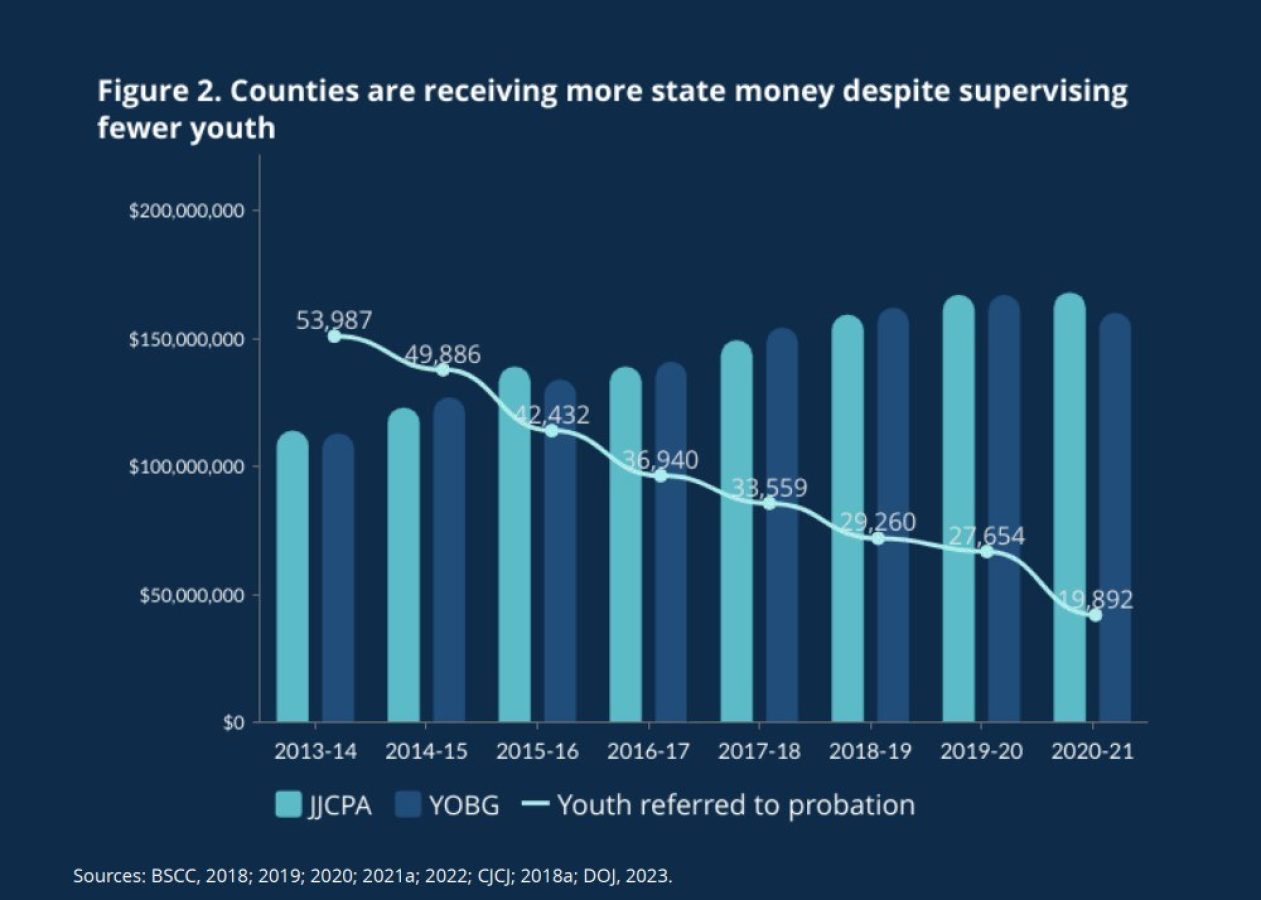
With the closure of DJJ, the state is giving hundreds of millions more to counties — some through one-time funds to improve facilities and the rest through the Juvenile Justice Realignment Block Grant (JJRBG), which will total $208.8 million by Fiscal Year 2024 – 25 (SB 823, 2020). By overfunding probation, California leaders have created a dangerous incentive. Counties must now justify their new or renovated facilities, thousands of unused beds, and hundreds of millions in state grants. Probation officers, who largely decide where youth are placed within the new system, have a vested interest in sending youth to and keeping them in secure facilities.
Probation was already influential in the capitol. Realignment increased their power. The Chief Probation Officers of California, a lobbying group representing probation interests, set many of the terms for juvenile realignment, including successfully advocating for the sizable JJRBG. Probation departments have used realignment as a power and money grab, and youth are paying the price.
Recommendations
California is closing the dark history that is DJJ, but our work is not over. It is our responsibility to ensure these practices are never replicated while simultaneously implementing and growing proven alternatives to youth incarceration. We recommend the following: 1) Pay reparations to DJJ survivors as well as survivors’ families, 2) Advance efforts to deinstitutionalize nationwide, and 3) Ensure counties do not replicate DJJ’s failed practices.
These recommendations each address the same underlying problem. That is, in an attempt to curb crime, California has overly relied on confining and monitoring youth. Incarceration has served as a catch-all to other societal problems. Consequently, this approach has caused more damage than repair to youth and communities. Thousands of youth, family members, and community members have been traumatized by DJJ. To solve this problem, California must not simply adopt the failed practices of the past. Juvenile justice reform must seek new approaches that invest in families and communities, rather than those tied to the narrow interests of probation bureaucracies.
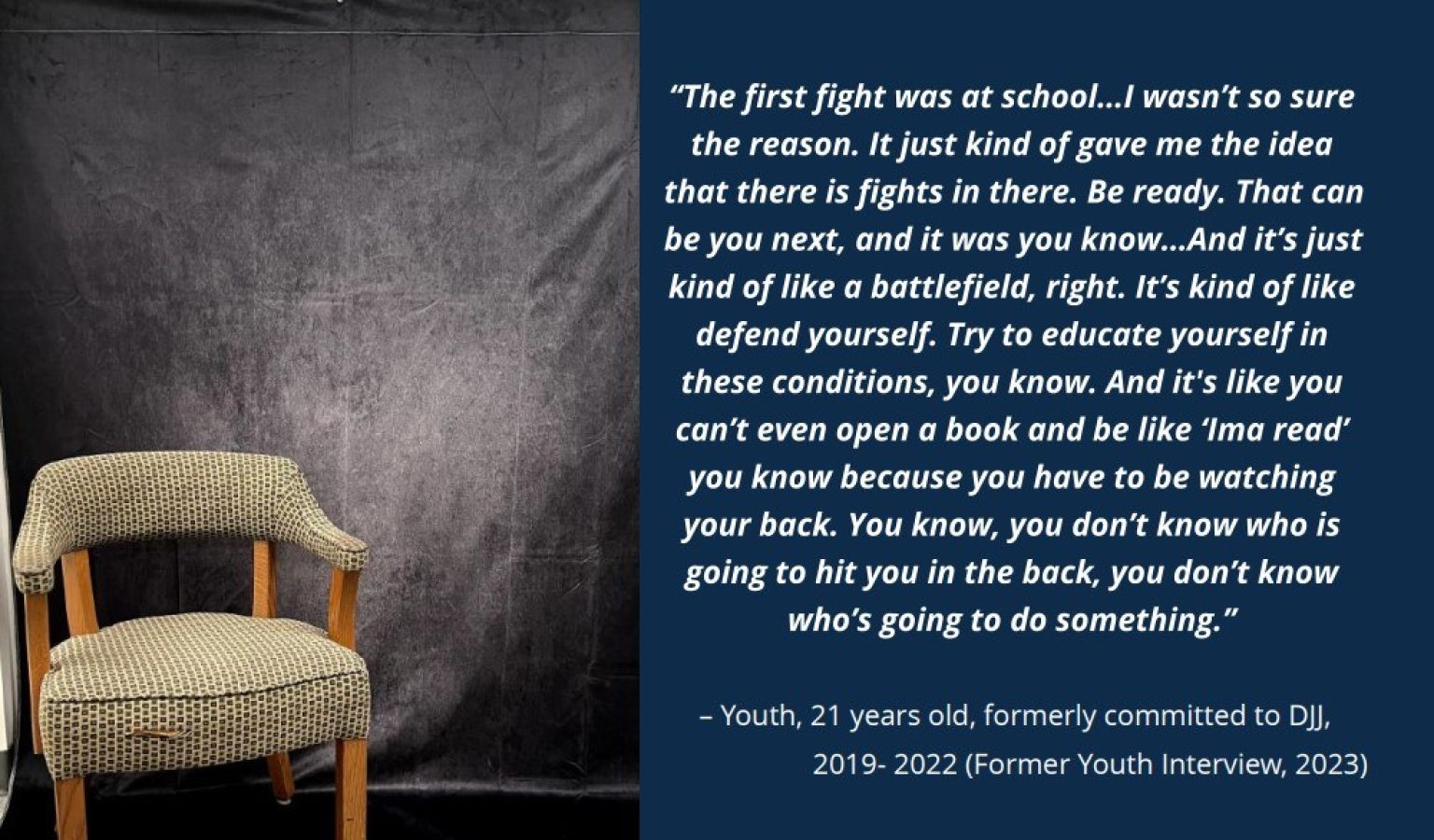
a) Reparations
California is responsible for DJJ’s damage and therefore owes reparations to the youth and family members harmed by these facilities. For over 100 years, state institutions subjected youth to brutal conditions and traumatizing abuse that had a devastating impact on their future life prospects. This abuse has come at a grave cost, both emotionally and economically. Youth who are detained or confined are derailed academically. This equates to a direct economic loss as it impacts their future jobs prospects (Aizer & Doyle, 2015). Additionally, there are medical issues to consider, as confined youth are more likely to have mental health and physical health issues; health issues that often go unaddressed (Barnert, 2017; OJJDP, 2017). For decades, youth leaving DJJ have faced these obstacles while simultaneously battling the impacts of being confined in dehumanizing conditions plagued by violence during pivotal developmental stages.
Job and income loss, reduced academic attainment, and mental health trauma are issues that negatively affect, not only youth, but the whole of society. These issues exacerbate economic inequities in the state. High inequality leads to lower long-term GDP growth rates, poor public health and lower educational attainment — issues that place a higher burden on the state infrastructure (Birdsong, 2015). It is a dangerous cycle, one that disproportionately impacts young people of color. Ending the cycle requires the state to take financial responsibility.
Reparations are a starting point from which the state can seek to amend these grave injustices. DJJ facilities were implemented and maintained by state leaders who sat idly by as the system they had put into place failed and traumatized youth. Rather than take action, DJJ administrators and state officials were complicit in allowing these horrific conditions to continue by choosing ignore the evidence.
State leaders and administrators ignored the families who advocated, protested, and demanded change (Williams, 2004). their youth. The state of California is directly responsible for the damage caused. While those complicit cannot repair all the harm imposed by this abusive system, they can mitigate the damage by paying reparations to those impacted.7 Reparations are an acknowledgment that harm was done while simultaneously attempting to repair it. However, reparations alone will not adequately address the inequities mentioned above. This recommendation must be accompanied by policy and practice so that past harms are not duplicated.
b) Advancing Deinstitutionalization Nationwide
All youth deserve community care and that means deinstitutionalizing. The reallocation of youth from state-run facilities to community based care should be at the forefront of the state’s planning. For too many years, DJJ facilities, which followed an adult corrections design, were dysfunctional and incapable of achieving their statutory purpose:
The purpose of this chapter is to protect society from the consequences of criminal activity and to that purpose community restoration, victim restoration, and offender training and treatment shall be substituted for retributive punishment and shall be directed toward the rehabilitation of young persons who have committed public offenses.
(WIC § 1700).
By default, the system was little more than a punitive youth penitentiary system disguised as a place of rehabilitation. Many youth confined in DJJ came from communities that had inadequate resources. Instead of meeting communities’ needs, the state further abused, stigmatized and penalized their youth. A system solely based on punishment does not work. As California moves to close these outmoded facilities, other states can follow suit. It is time for a national change to youth justice.
“As you conversed with the youth, the topic of prison reform surfaced. Regarding that topic, you stated, ‘People want reform until a big black rapist shows up at their house. Anyone [here] shows up at my house and I am shooting them,’ or words to that effect. [name redacted] asked you ‘What if I show up at your house?’ or words to that effect. You told [name redacted] ‘I’d shoot you’”.

The closure of DJJ should be an example to other states. If the state that once had one of the world’s largest youth penal systems can deinstitutionalize, others can follow. Currently, there are about 69 youth prisons in the United States (YouthFirst, 2019). These facilities are typically placed in remote areas, far away from youths’ families and communities. Providing services closer to home enhances the potential for long term success. Resources can be applied directly to the youth and their family, which address the entire constellation of life circumstances that contribute to their system involvement. When youth are cared for closer to home, everyone benefits.
With youth crime at record-lows, now is an opportunity to close youth institutions. In 2021, only 0.4% of the entire California youth population (age 10 – 17) was arrested compared to 12.5% in 1970, a 96% decrease (Figure 3). Similarly, youth being referred to probation is also at historic lows. In 2021, it was less than half of 1 percent of the entire population (DOJ, 2023).
Less crime, reduced incarceration, and fewer referrals to probation are occurring in the absence of youth correctional facilities — dispelling any notion that these institutions reduce crime. Research shows that youth confinement increases chances of recidivism. One study found that juvenile pretrial detention was linked to a 33% increase in felony recidivism and an 11% increase in misdemeanor recidivism within one year (Walker & Herting, 2020). This is a reminder that the best way to keep youth from entering the criminal justice system is by keeping them out of it.
c) Guarding against the creation of new DJJs within California counties
Lastly, we recommend continued oversight of current juvenile detention facilities, properly funded defense-based advocacy, and equitable access to alternative programs. This ensures that the counties do not replicate DJJ’s conditions. Such a multifaceted approach allows the state to proactively maintain adequate minimum standards, while also funding and
supporting programs that meet youths’ needs in the community. The latter component is critical, as the state moves from solely punitive practices, consisting largely of probation-run detention programs, towards a more holistic approach. Probation cannot be reformed and no amount of policy change can remake the foundation of this institution, a foundation whose main practice is community surveillance and punishment. For these reasons, the state needs to make a substantial investment in alternative programs that operate independently of the probation system.
Create Three Levels of Oversight
Proper oversight should occur at three levels: the state, the counties, and with independent agencies. Outside agencies, such as the newly-formed oversight body, the Office of Youth and Community Restoration (OYCR), should be responsible for this monitoring. This means, OYCR should receive the proper authority to conduct audits and gain quick and easy access to all information collected by county systems. This involves mandating uniform data collection and analyzing this data for concerning trends, such as, increased or disproportionate use of psychotropic medications, increased solitary confinement, and use of force by staff. In addition to this, proper oversight should include an effective grievance procedure. Currently, there is an ombudsperson for this process, however, this person does not get immediate access to a facility when following up on a grievance. Instead, there is a 48 hour wait from when an ombudsperson can enter a facility. This obstacle, along with not having access to all employee personnel files, hinders an ombudsperson’s ability to properly investigate issues (WIC § 2200). Other oversight bodies, such as the Office of the Inspector General, have greater access to the material needed to conduct investigations, but no longer have jurisdiction over any juvenile facilities (PEN § 6126). To be truly effective, an ombudsperson should have immediate access to facilities and files so that investigating grievances occurs promptly.
The next level of oversight should be the county-based juvenile justice commissions. These commissions exist in every county and are appointed by the judiciary. Unfortunately, due to the absence of proper training, guidance and accountability, they fail to fulfill their oversight responsibility. These commissions, composed of citizen volunteers, should be trained and mandated to conduct ongoing facility inspections and submit yearly reports to OYCR. Their role should be overseen by the OYCR.
Finally, independent agencies, such as the Youth Law Center, Pacific Juvenile Defender Center, Human Right Watch, or CJCJ should be given full access to facilities throughout the state to conduct inspections and issue reports about conditions. This addition will allow for a balance of power among state officials, county officials, and independent agencies. The dynamic will offer stability to these groups, while holding one another accountable.
Addressing Staff Vacancies
In addition, there should be a radical transformation to address staff vacancies within juvenile detention centers. This can be accomplished by redefining “staff” to include members outside of probation. Currently, only certain positions working within detention facilities are categorized as staff for the purposes of maintaining safe staff-to-youth ratios. Detention facilities could offer a certification program that, upon completion and proper background checks, would allow outside organizations to come in as supervisory staff. This would address the issue of staff vacancies while offering youth the opportunity to work closely with credible messengers whom youth have grown to trust.
Robust Defense System
Oversight and policy changes will help address problems within current juvenile detention centers, but those alone are not enough to prevent the replication of DJJ. True transformation can only happen outside institutionalized youth detention centers. A robust defense system is one step in ensuring youth have adequate representation in court. Properly funding defense systems will allow cases to be maintained and monitored so that youths’ progress is closely tracked. This robust defense system can then guide personalized treatment and reintegration plans. Furthermore, as part of the SYTF 6‑month review, judges should be presented with information from the youth’s defense advocate and not just depend on the probation officer assessments. This will offer a holistic view of the youth in the disposition phase and at these reviews. This expands the role of defense attorneys to monitor their clients’ cases through every stage of the juvenile justice system and put forth their own treatment and reintegration plans.
Alternative programs
Commitment to change means real investment in programs and systems that work. Probation cannot be the only entity the state turns to when they think about juvenile justice. Countless alternative programs have proven effective and yet they are poorly funded, largely due to probation’s strong influence on most funding streams. For many years, programs like CJCJ’s Detention Diversion Advocacy Program (DDAP) have successfully diverted youth from entering the juvenile justice system and is considered a national model (DOJ, 2022). Despite its documented success, San Francisco’s juvenile probation department has endeavored over the years to have DDAP’s funding reduced or eliminated since it is viewed as a threat to conventional practice. Alternative programs based in communities most impacted by youth incarceration should have a real seat at the decision making table. Similarly, independent funding streams should be created that are not controlled or overly influenced by the probation systems. This funding should be consistent, equitable to access, and allocated to communities most impacted by incarceration.
Conclusion
The closure of DJJ is historic, but it is also more than a century overdue. The abuses occurring within DJJ facilities were well publicized for decades. From the Commonweal reports of the 1980s to the Legislative Analyst’s Office and Little Hoover Commission recommendations of the 2000s to CJCJ’s monitoring efforts spanning nearly 40 years, there was a strong case for closure (CJCJ, 2023c; DeMuro et al., 1988; LAO, 2012; Lerner, 1982; 1986; LHC, 2008). Yet, year after year, state leaders failed to act, resulting in immeasurable damage. Through the confluence of a pandemic-related budget crisis and a dwindling youth population, the Newsom administration seized on an opportunity to shut DJJ down.
This is a distinct victory. No young person will ever be subjected to DJJ again. Yet tens of thousands of Californians are still saddled with the memories and trauma of its institutions. State leaders must take responsibility for the harm done and take steps to remedy it. Also, we must ensure that youth in today’s SYTFs do not carry their own traumatic memories of abusive conditions behind bars. Only through strong governmental and independent oversight, mechanisms to counter probation overreach, and a commitment to funding communities can we guard against county systems replicating DJJ’s failure and neglect. This is California’s path towards a humane future for all youth.
Sources
Aizer A., Doyle J. (2015). Juvenile incarceration, human capital, and future
crime: Evidence from randomly assigned judges. The Quarterly Journal
of Economics, 130(2), 759 – 803. https://doi.org/10.1093/qje/qj….
Ajmani, N. & Webster, E. (2016). Failure After Farrell: Violence and
Inadequate Mental Health Care in California’s Division of Juvenile
Justice. Center on Juvenile and Criminal Justice (CJCJ). At:
https://www.cjcj.org/media/imp….
Barnert, E.S., et al. (2017). How Does Incarcerating Young People Affect
Their Adult Health Outcomes? Pediatrics. 2017 Feb;139(2):e20162624.
doi: 10.1542/peds.2016 – 2624.
Birdsong, N. (2015). The Consequences of Economic Inequality. At:
https://sevenpillarsinstitute.…
inequality/#:~:text=Societies%20with%20pronounced%20economic%20
inequality, and%20lower%20average%20education%20levels.
Board of State and Community Corrections (BSCC). (2016). Juvenile
Detention Profile Survey. Data obtained via public records request.
Board of State and Community Corrections (BSCC). (2018). Juvenile Justice
Crime Prevention Act & Youthful Offender Block Grant, March 2018. At:
https://www.bscc.ca.gov/wp-con… Leg-Report-FINAL‑3.9.18.pdf.
Board of State and Community Corrections (BSCC). (2019). Juvenile Justice
Crime Prevention Act & Youthful Offender Block Grant, March 2019. At:
https://www.bscc.ca.gov/wp-con… Leg-Report-FINAL.pdf.
Board of State and Community Corrections (BSCC). (2020). Juvenile Justice
Crime Prevention Act & Youthful Offender Block Grant, March 2020. At:
http://www.bscc.ca.gov/wp-cont… Leg-Report-FINAL.pdf.
Board of State and Community Corrections (BSCC). (2021). BSCC Finds LA
Juvenile Halls Unsuitable for Confinement of Minors. At:
https://www.bscc.ca.gov/news/b…finds-la-juvenile-halls-unsuitable-for-
confinement-of-minors/.
Board of State and Community Corrections (BSCC). (2021a). Juvenile
Justice Crime Prevention Act & Youthful Offender Block Grant, March
2021. At: https://www.bscc.ca.gov/wp-con… JJCPA-YOBG-Leg-Report-
FINAL.pdf.
Board of State and Community Corrections (BSCC). (2022). Juvenile Justice
Crime Prevention Act & Youthful Offender Block Grant, March 2022. At:
https://www.bscc.ca.gov/wp-con… Leg-Report-FINAL‑3 – 8‑2022.pdf.
Board of State and Community Corrections (BSCC). (2023). Juvenile
Detention Profile Survey. Data available via public records request.
California Department of Corrections and Rehabilitation (CDCR). (2018).
Notice of Adverse Action. Obtained via California Public Record Act.
Available upon request.
California Department of Corrections and Rehabilitation (CDCR). (2019).
DJJ population data. Statistical information on DJJ removed from the
CDCR webpage in the spring of 2019. Data saved and on file with the
authors.
California Department of Corrections and Rehabilitation (CDCR). (2023).
The History of the Division ofJuvenile Justice. At:
https://www.cdcr.ca.gov/juveni….
California Department of Finance (DOF). (2023). Demographic Research
Unit, Estimates, Annual Intercensal Population Estimates by
Race/Ethnicity with Age and Gender Detail. At:
https://dof.ca.gov/Forecasting….
Center on Juvenile and Criminal Justice (CJCJ). (2001). Widening the Net in
Juvenile Justice and the Dangers of Prevention and Early Intervention.
At: https://www.cjcj.org/media/imp….
Center on Juvenile and Criminal Justice (CJCJ). (2002). Aftercare as
Afterthought: Reentry and the California Youth Authority. At:
https://static.prisonpolicy.or….
Center on Juvenile and Criminal Justice (CJCJ). (2005). Restructuring Juvenile Corrections in California. At:
https://www.cjcj.org/media/imp….
Center on Juvenile and Criminal Justice (CJCJ). (2007). California Juvenile
Justice Reform and SB 81, Testimony Of Daniel Macallair, Executive
Director Center on Juvenile and Criminal Justice, To The Little
Hoover Commission. At: https://lhc.ca.gov/sites/lhc.c….
Center on Juvenile and Criminal Justice (CJCJ). (2009). Closing California’s
Division of Juvenile Facilities: An Analysis of County Institutional
Capacity. At: https://www.cjcj.org/media/imp….
Center on Juvenile and Criminal Justice (CJCJ). (2010). The California
Miracle: Drastically Reduced Youth Incarceration, Drastically Reduced
Youth Crime. At: https://www.cjcj.org/media/imp….
Center on Juvenile and Criminal Justice (CJCJ). (2011). Closing California’s
Division of Juvenile Facilities: An Analysis of County Institutional
Capacity 2009 – 2010. At: https://www.cjcj.org/media/imp….
Center on Juvenile and Criminal Justice (CJCJ). (2011a). Renewing Juvenile
Justice: Building A 21st Century Juvenile Justice System for California. At:
https://www.cjcj.org/media/imp….
Center on Juvenile and Criminal Justice (CJCJ). (2016). Farrell Litigation
Timeline. At: https://www.cjcj.org/media/imp….
Center on Juvenile and Criminal Justice (CJCJ). (2016a). Young Adult
Prisons Are Not the Answer. At: https://www.cjcj.org/news/blog….
Center on Juvenile and Criminal Justice (CJCJ). (2017). California’s Division
of Juvenile Justice (DJJ) Reports High Recidivism Despite Surging Costs.
At: https://www.cjcj.org/reports-publications/publications/californias-
division-of-juvenile-justice-djj-reports-high-recidivism-despitesurging-
costs.
Center on Juvenile and Criminal Justice (CJCJ). (2018a). An Opportunity for
Reinvestment: California State Juvenile Justice Funding in Five Bay Area
Counties. At https://www.cjcj.org/reportspublications/publications/ne
w‑report-california-juvenile-justice-funding-in-five-bay-area-counties
shows-opportunity-for-reinvestment.
Center on Juvenile and Criminal Justice (CJCJ). (2019). Unmet Promises:
Continued Violence and Neglect in California’s Division of Juvenile
Justice. At:http://www.cjcj.org/news/12466.
Center on Juvenile and Criminal Justice (CJCJ). (2020). State Spending
Soars to Historic Levels Amid Reorganization of California’s Youth
Correctional System
At: https://www.cjcj.org/reportspublications/publications/new-fact-
sheet-spending-on-californias-youth-correctional-system-soarsamid-
administrative-shifts.
Center on Juvenile and Criminal Justice (CJCJ). (2023). Division of Juvenile
Justice monitoring reports and data. At: https://www.cjcj.org/reports‑p….
Center on Juvenile and Criminal Justice (CJCJ). (2023a). Division of Juvenile
Justice Data: Population Characteristics Reports, December 2019. At:
https://www.cjcj.org/reportspublications/resource/division-of-juvenile-
justice-data.
Center on Juvenile and Criminal Justice (CJCJ). (2023b). History &
Education: Juvenile Corrections Reform in CA. At:
https://www.cjcj.org/history‑e….
Center on Juvenile and Criminal Justice (CJCJ). (2023c). Reports and
Publications: Division of Juvenile Justice. At:
https://www.cjcj.org/reports‑p….
Chong, J. (2004). Families of Boys Found Hanged at CYA Facility File Legal
Claims. Los Angeles Times. At: https://www.latimes.com/archiv….
Commonweal Juvenile Justice Program (2014). Resources: Commonweal
Publications. At: https://comjj.org/realignment/….
DeMuro, P., DeMuro, A., & Lerner, S. (1988). Reforming the CYA: How to
End the Crowding, Diversify Treatments, and Protect the Public without
Spending More Money. Commonweal Research Institute. Common
Knowledge Press. Bolinas, California.
Department of Justice (DOJ). (2022). Crime Solutions: Program Profile:
Detention Diversion Advocacy Program (DDAP). At:
https://crimesolutions.ojp.gov…Diversion%20Advocacy%20Program,to%
20be%20held%20in%20detention.
Department of Justice (DOJ). (2023). Juvenile Court and Probation
Statistical System (JCPSS). At: https://openjustice.doj.ca.gov….
Ella Baker Center for Human Rights (EBC). (2023). Celebrating the Closure of CA Youth Prisons. At: https://ellabakercenter.org/bo….
Farrell Lawsuit. (2003). Case: Farrell v. Harper.
At: https://clearinghouse.net/case….
Fremon, C. (2023). Youth Found Dead Of Drug Overdose At LA County’s
Barry J. Nidorf Juvenile Hall. Witness LA. At:
https://witnessla.com/breaking…nidorf-juvenile-hall/.
Gladstone, M. (1999). Guards at Youth Prison Accused of Abusing Inmates.
Los Angeles Times. At: http://articles.latimes.com/19… news/mn-14343.
Himmelstein, K.E.W., Lawrence, J.A., Jahn, J.L., et al. (2022). Association
Between Racial Wealth Inequities and Racial Disparities in Longevity
Among US Adults and Role of Reparations Payments, 1992 to 2018.
JAMA Netw Open. 2022;5(11):e2240519
doi:10.1001/jamanetworkopen.2022.40519.
Legislative Analyst’s Office (LAO). (2012). The 2012 – 13 Budget: Completing
Juvenile Justice Realignment. At: https://lao.ca.gov/Publication….
Legislative Analyst’s Office (LAO). (2019). The 2019 – 20 Budget:
Reorganization of the Division of Juvenile Justice. At:
https://lao.ca.gov/Publication….
Legislative Analyst’s Office (LAO). (2022). Proposition 98 funding by
Segment and Source. At: https://lao.ca.gov/Education/E….
Lerner, S. (1982). The CYA Report: Conditions of Life at the California Youth
Authority. Commonweal Research Institute. Common Knowledge Press.
Bolinas, California.
Lerner, S. (1986). Bodily Harm: The Pattern of Fear and Violence at the
California Youth Authority. Commonweal Research Institute. Common
Knowledge Press. Bolinas, California.
Little Hoover Commission (LHC). (2008). Juvenile Justice Reform:
Realigning Responsibilities. At: https://lhc.ca.gov/report/juve….
Macallair, D. (2015). After the Door Were Locked: A history of Youth
Corrections in California and the Origins of the Twenty-First-Century
Reform. Rowman & Littlefield.
Martin, M. (2004). SACRAMENTO / Video shows beatings of young men /
Counselors at Youth Authority should be charged, senator says. SF
Gate. At: https://www.sfgate.com/bayarea…Video-shows-beatings-
of-young men-2772177.php.
Mulvey, E. (2011). Highlights From Pathways to Desistance: A Longitudinal
Study of Serious Adolescent Offenders. At:
https://www.ojp.gov/ncjrs/virt…longitudinal-study-serious.
Office of Inspector General (OIG). (2021). Discipline Monitoring. Case
Summaries. Case No. 22 – 0044512-DM.
Office of Juvenile Justice and Delinquency Prevention (OJJDP). (2017).
Literature Review: A Product of the Model Programs Guide. Intersection between Mental Health and the Juvenile Justice System. At:
https://ojjdp.ojp.gov/model-
pr…reviews/intsection_between_mental_health_and_the_juvenile_justic
e_system.pdf.
Office of Justice Program (OJP). (2001). Sentencing and Corrections in the
21st Century: Setting the Stage for the
Future.https://www.ojp.gov/sites/g/fi….
Penal Code § 6126 (PEN § 6126). Chapter 8.2. Office of the Inspector
General. §6126 (b). At: https://leginfo.legislature.ca…?
sectionNum=6126.&nodeTreePath=6.13.12&lawCode=PEN.
Quednau, J. (2021). How are violent crime rates in U.S. cities affected by
poverty? The Park Place Economist: Vol. 28. Issue 1. Article 8 At:
https://digitalcommons.iwu.edu….
Reeves, D. (2020). Gladiator School: Stories from Inside YTS. Vantage. At:
https://medium.com/vantage/pho…cc83cd9eaf42.
Senate Bill 81 (SB 81). (2007). Committee on Budget and Fiscal Review.
Corrections. At: http://www.leginfo.ca.gov/pub/….
Sullivan, C. (1988). David Enters Prison a Delinquent and Comes Out a
Gang Member. Christian Science Monitor. At: https://www.csmonitor.
com/1988/0929/a1ward4.html.
Town Hall on Juvenile Hall Conditions (Town Hall). (2023). Conversation
with community leaders held on March 22, 2023. Participant names and county-specific information withheld to maintain the anonymity of
community leaders and the youth they serve.
Tucker, J. & Palomino, J. (2019). Vanishing Violence: Part 2. San Francisco
Chronicle. At: https://projects.sfchronicle.c….
University of California. (2023). Tuition and cost of attendance. At:
https://admission.universityof….
Walker, S.C., & Herting, J.R. (2020). The Impact of Pretrial Juvenile
Detention on 12-Month Recidivism: A Matched Comparison Study.
Crime & Delinquency, 66(13 – 14), 1865 – 1887.
https://doi.org/10.1177/001112….
Welfare & Institution Code § 1700 (WIC § 1700). (2021). At:
https://leginfo.legislature.ca….
Welfare & Institution Code § 2200 (d) (WIC § 2200). At:
https://leginfo.legislature.ca… TreePath=4.7&lawCode=WIC.
Williams, J. (2004). Dozens protest latest CYA death. At:
https://www.recordnet.com/stor….
YouthFirst. (2019). Youth Prison Locations. At:
https://www.nokidsinprison.org…locations.
Youth/Former Youth Interview. (2023). Three youth and adults who were
confined in CYA/DJJ were interviewed between May and June 2023.
Interview transcripts and some interviewee names are withheld to
preserve anonymity.
Please note: Jurisdictions submit their data to the official statewide or national databases maintained by appointed governmental bodies. While every effort is made to review data for accuracy and to correct information upon revision, CJCJ cannot be responsible for data reporting errors made at the county, state, or national level.
Photos and quotes from interviews are a part of CJCJ’s extensive archive of historical documents from CYA/DJJ. As California looks towards new possibilities, it critical we shed light on this dark history, so as to avoid replicating it at a local level. We will continue to share items from this archive and encourage you to reach out to us if you would like to send us photos or documents from your time in the state’s juvenile system.
Contact: For more information about this topic or to schedule an interview, please contact CJCJ Communications at (415) 621‑5661 x. 103 or cjcjmedia@cjcj.org.
To read other CJCJ publications on California’s youth prisons and juvenile justice system, click here.
- 1 See, for example, the scandals chronicled in the following news articles: Alfonseca, 2019; Chong, 2004; Gladstone,1999; Martin, 2004; Sullivan, 1988. ↩
- 2 See Ajmani & Webster, 2016; Commonweal, 2014; CJCJ, 2023b; 2023c; Macallair, 2015; and Reeves, 2020. ↩
- 3 In the 2021-22 fiscal year, counties received more than $300 million in state funding through the Juvenile Justice Crime Prevention Act ( JJCPA) and the Youthful Offender Block Grant (YOBG). In the coming years, counties will receive another $200 million through the Juvenile Justice Realignment Block Grant, which was created as part of DJJ’s closure. These funding streams augment the substantial funding probation departments already receive through their county budgets. ↩
- 4 Currently, Los Angeles County may continue to house youth who have been committed to the county’s SYTF program in Barry J. Nidorf Juvenile Hall. This is despite the tragic death of a young person in that program on May 9, 2023 (Fremon, 2023). ↩
- 5 As CJCJ has documented in previous reports, the cost per youth of a secure facility has been increasing as youth populations fall (CJCJ, 2017; 2018; 2020). An investigation by the San Francisco Chronicle exposed this trend in the Bay Area, noting that, in Fiscal Year 2017-18, San Francisco spent $266,000 per youth on its juvenile hall, Santa Clara County spent $514,000 per youth, and Alameda County spent $493,000 per youth (Tucker & Palomino, 2019). Spending hundreds of thousands of dollars per youth on secure confinement, whether it is funded through county budgets or state block grants, imposes a steep double cost—both to taxpayers and confined youth and their families. Instead, those funds could have been used to pay for housing, education, or community-based services for young people. As a point of comparison, $225,000 would cover more than 5 students’ expenses at a University of California school or more than 13 students at a K-12 school (See Figure 1) (LAO, 2022; SB 92, 2021; University of California, 2023). ↩
- 6 After adjusting for inflation, state spending on the JJCPA and YOBG increased nearly 30% over seven years (FY 2020-21 vs FY 2013-14). During that same period, the number of youth entering the justice system through a referral to probation fell 63%. ↩
- 7 California has offered reparations before for forced sterilizations that occurred during the eugenics movement (State of CA, 2021). ↩
